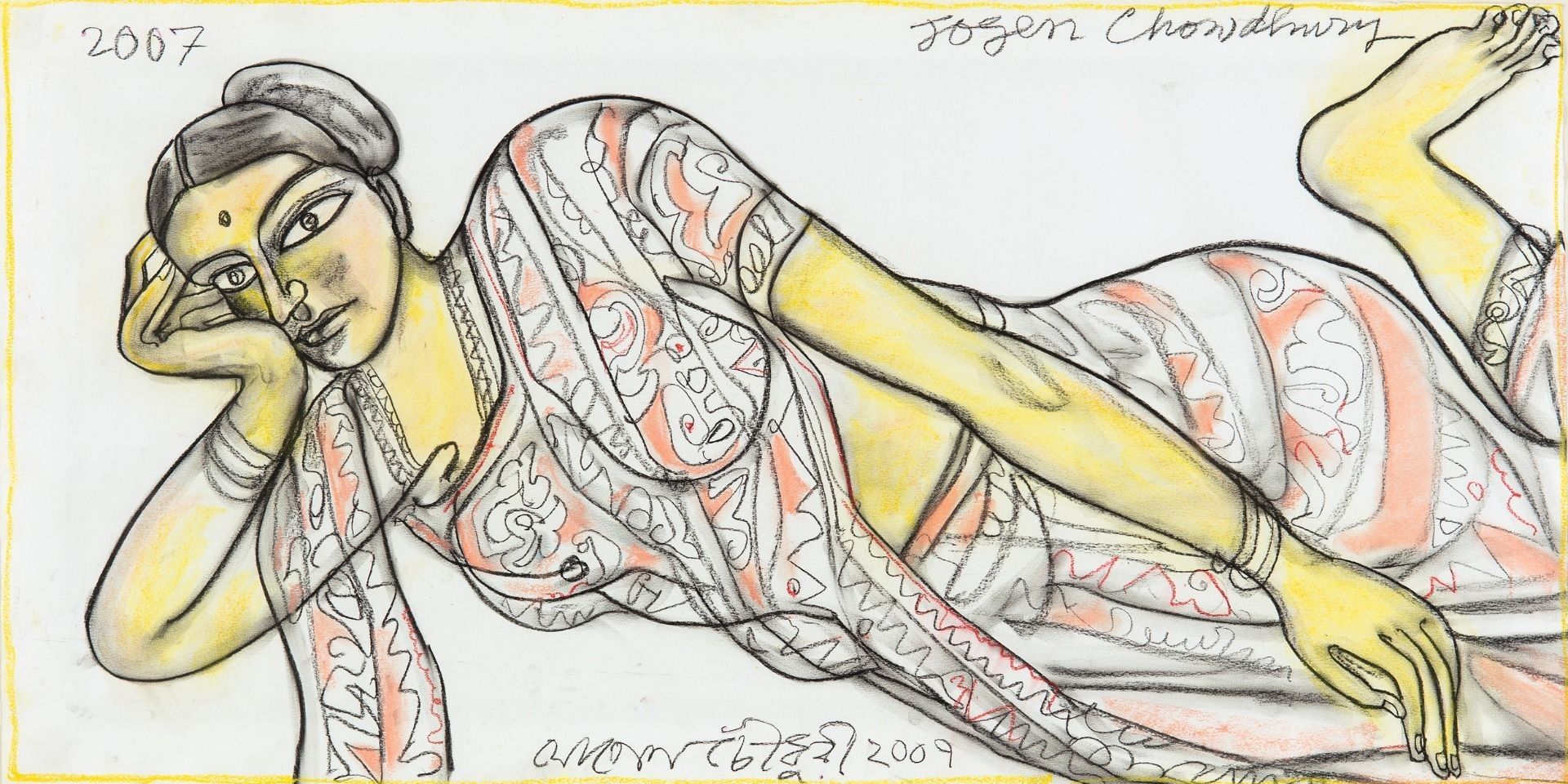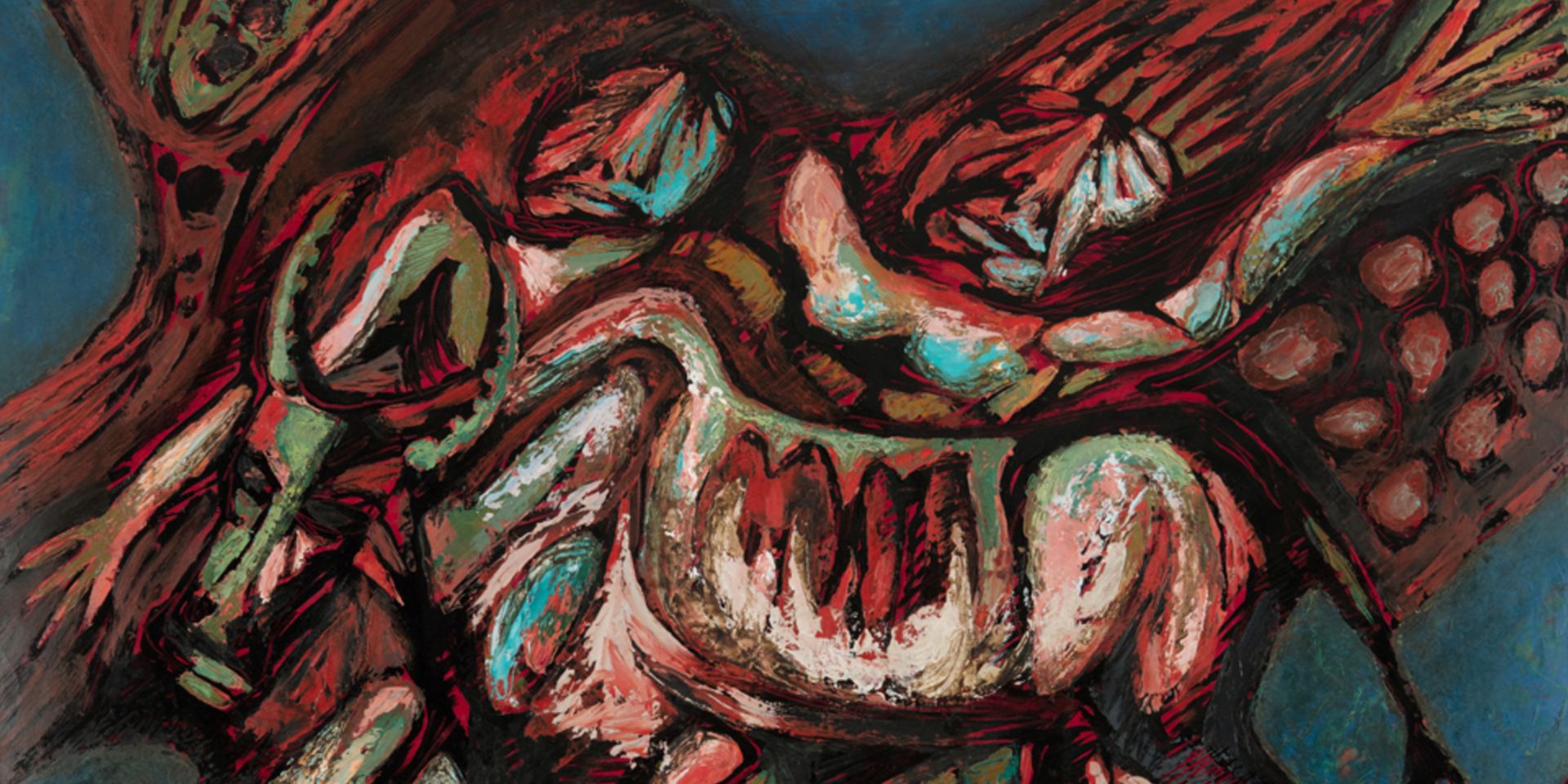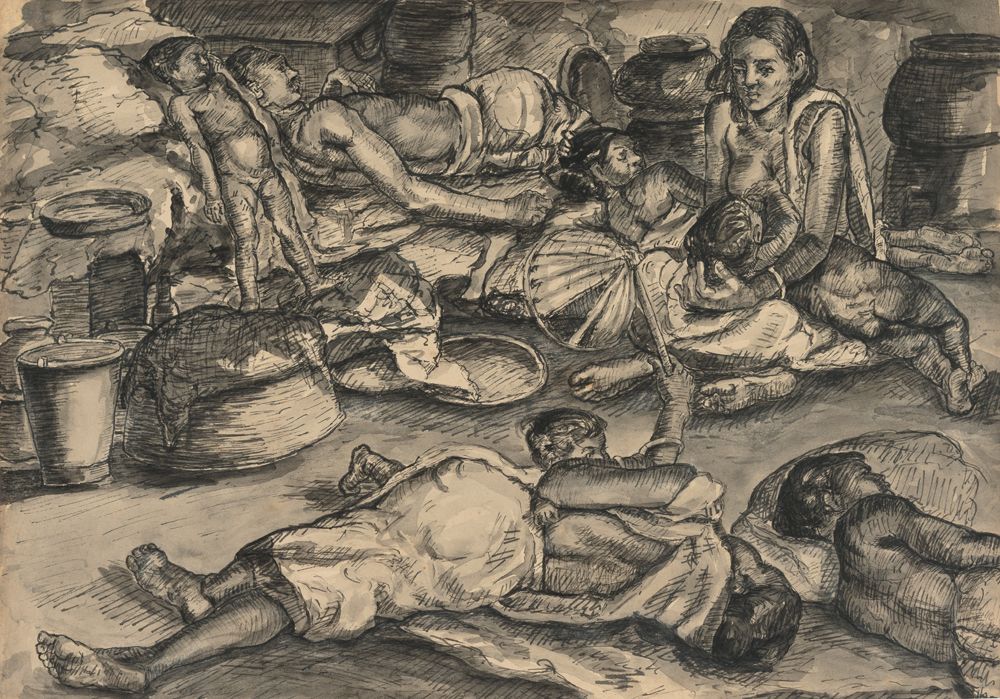Visualising the Freedom Struggle: A conversation with Vinay Lal
Visualising the Freedom Struggle: A conversation with Vinay Lal
Visualising the Freedom Struggle: A conversation with Vinay Lal
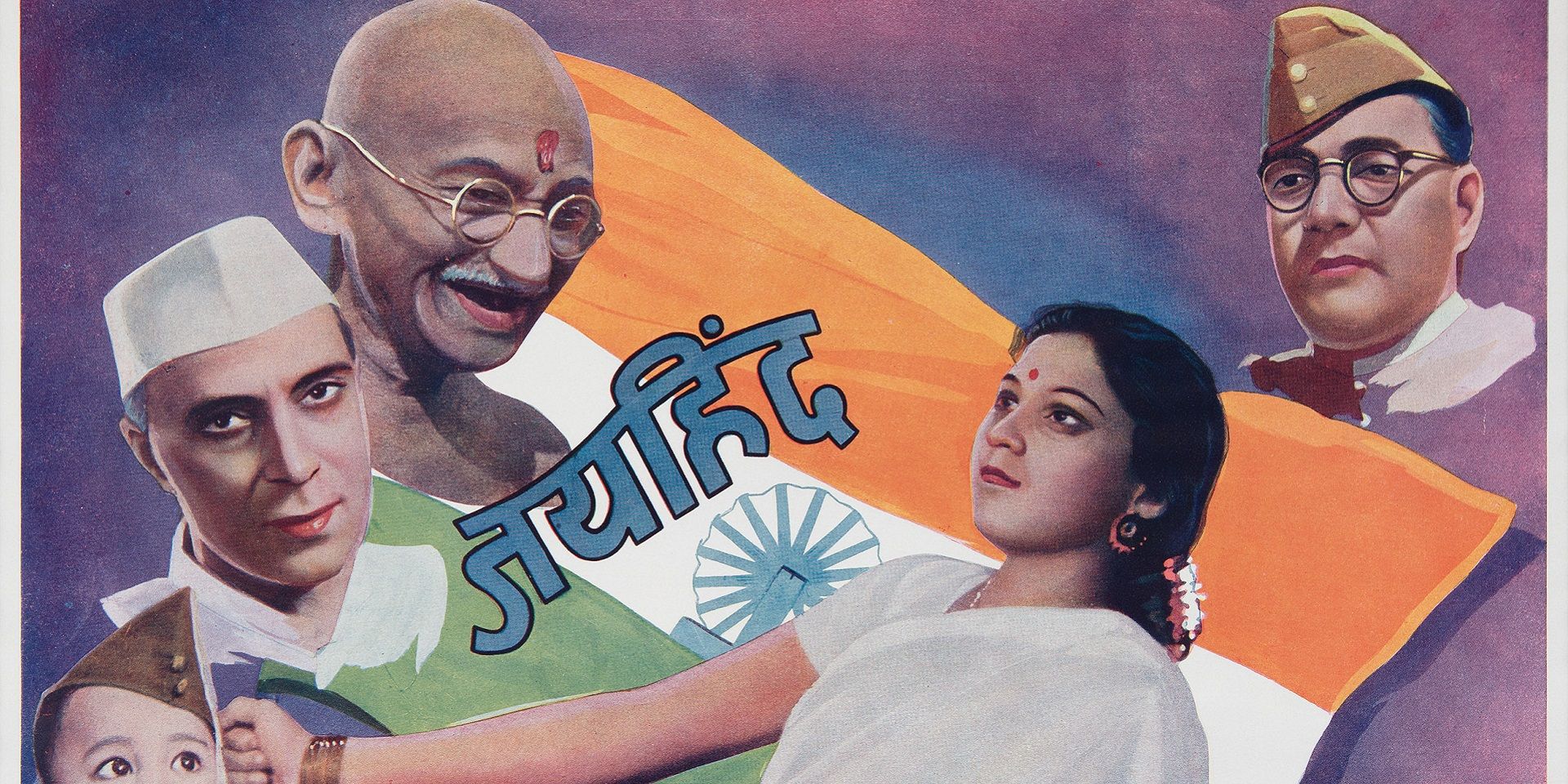
Historian Vinay Lal’s book Insurgency and the Artist: The Art of the Freedom Struggle in India seeks to put forth an interpretive, historical account of a visual archive of the Indian freedom struggle.
Drawing from subaltern historian Ranajit Guha’s provocation on the ‘prose of counter-insurgency’, where the late historian argues for a method of reading insurgents’ voices (or testimonies) in colonial archives against the grain, Lal suggests that the ‘delicate dance’ between image and text forces us to develop new tools for understanding the broader significance of the freedom struggle itself—especially the roles played by leaders, including Mahatma Gandhi, Subhas Bose and Bhagat Singh, along with a few female icons—like the idealized Bharat Mata—and women leaders like Sarojini Naidu, for the millions of people who could not read the prose produced by nationalist leaders. The visual image became a potent—if ambiguous—sign, around which narratives of resistance could take shape.
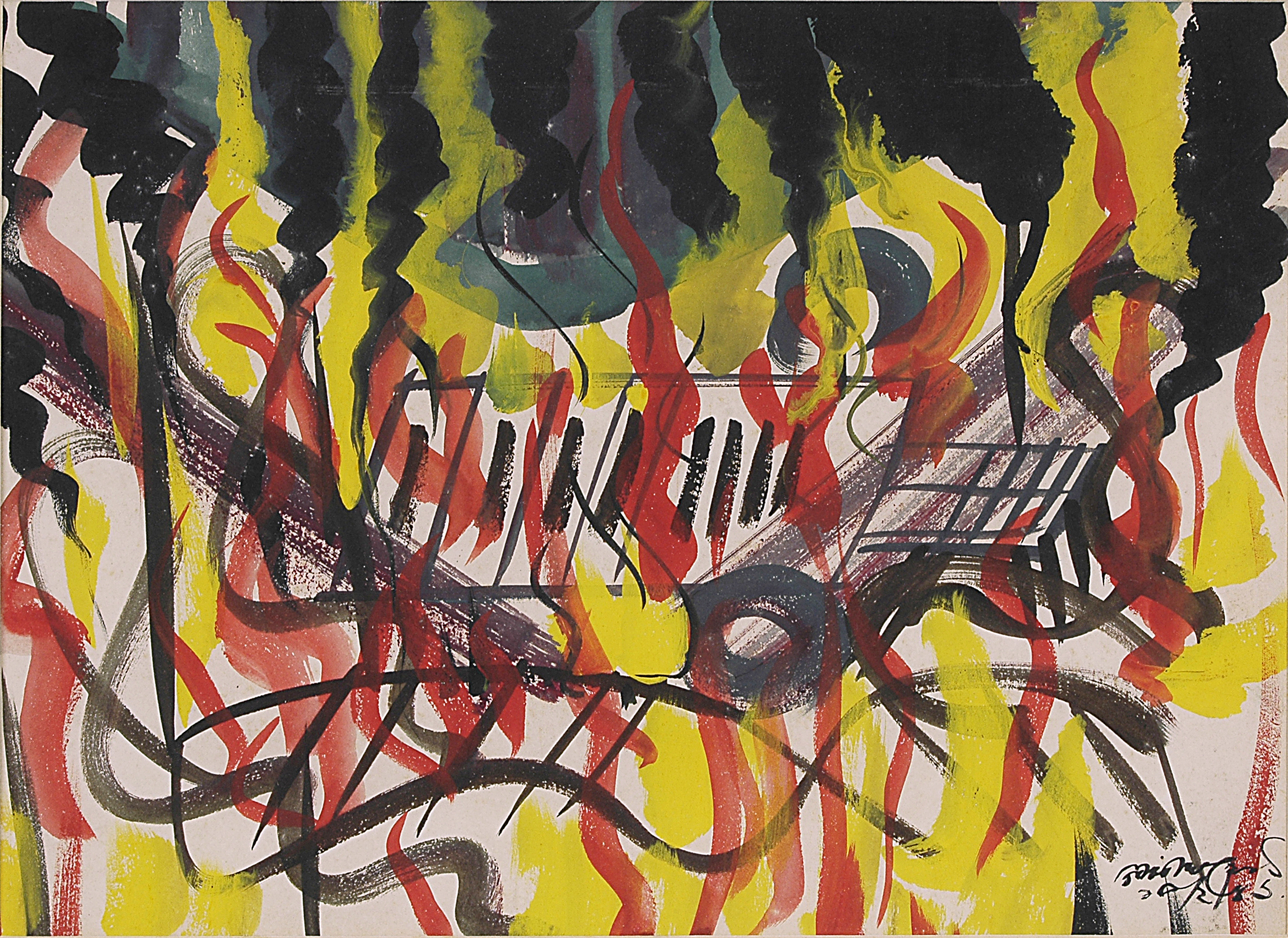
Gopal Ghose, Untitled, 1946, Gouache on paper pasted on mount board, 25.4 x 34.3 cm. Collection: DAG
The historian, who is also a Professor at the University of California, Los Angeles, discussed the book with DAG and what follows is an edited version of the conversation.
Q. You write early on in the book that its ‘intended focus… is on offering some cues on how the political image did not merely represent the struggle for freedom but indeed helped to make the nation’. What is a political image, and how does it participate in the making of national identity?
Vinay Lal: The simplest way to understand this concept is that a political image is a visual representation explicitly referring to political figures or events. To illustrate, consider an image depicting the Quit India movement. It is widely acknowledged that the Quit India movement stands as a significant milestone in the political fight for self-determination. That scenario would undoubtedly qualify as a political image. Similarly, consider encountering a portrayal of a nationalist leader, without preconceiving them as such. For instance, imagine seeing an image of Lala Lajpat Rai. Such a depiction would unmistakably be categorized as a political image. This distinction becomes apparent when comparing figures like Mohandas Gandhi, who is not solely perceived as a political entity but is also revered by many as a saintly figure or a social reformer. Gandhi's multifaceted identity lends itself to varied interpretations, depending on the nature of the image in question.
However, the examples I've provided so far are rather elementary in nature. Consider an image created by an artist like Chittaprosad. If you come across works by him depicting ordinary individuals being oppressed, not by a formidable political entity but by a subtle force, that image holds significant political weight. For instance, you shared with me an image where a few people from the masses, advocating for 'roti kapra makan' (food, clothing, shelter), are being crushed by a steamroller. This, in my view, unequivocally qualifies as a political image.
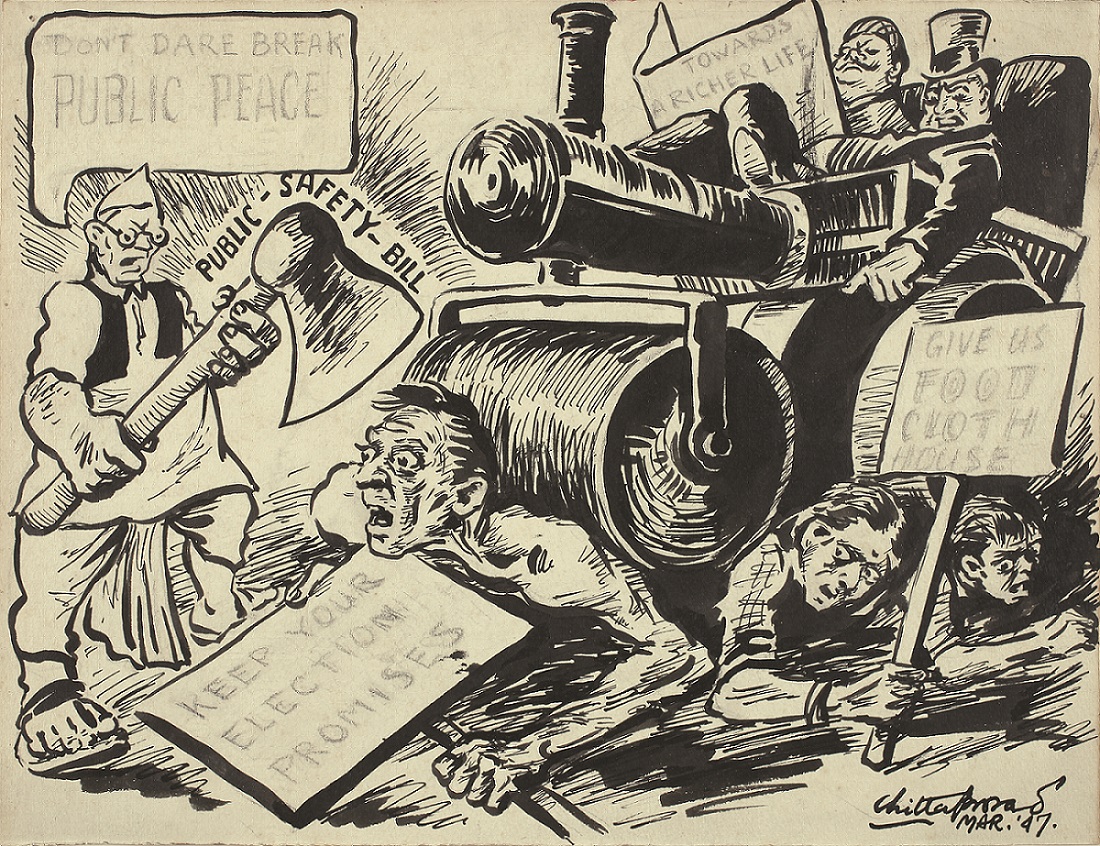
Chittaprosad, Untitled, Ink and graphite on paper. Collection: DAG
Consider also, for instance, the famous work of Abanindranath Tagore, who created one of the earliest representations of Bharat Mata. This depiction of Bharat Mata became nationalized (taking us to the latter part of your question). It became part of the domain for representing Mother India, evolving into what we might term an iconic political image. However, if we project forward over the next forty years from the creation of Abanindranath's 1905 image—let's suppose circumstances took a markedly different turn for various reasons—it's entirely plausible that some individuals might not have perceived this as a political image at all. However, in the light of what we know, this image would undoubtedly be interpreted as a political statement. Consequently, it becomes a significant component of what we could term a ‘nationalist canon of art’. This allows us to think about the diverse methods through which images contribute towards the work of nationalism. That's how I like to look at it.
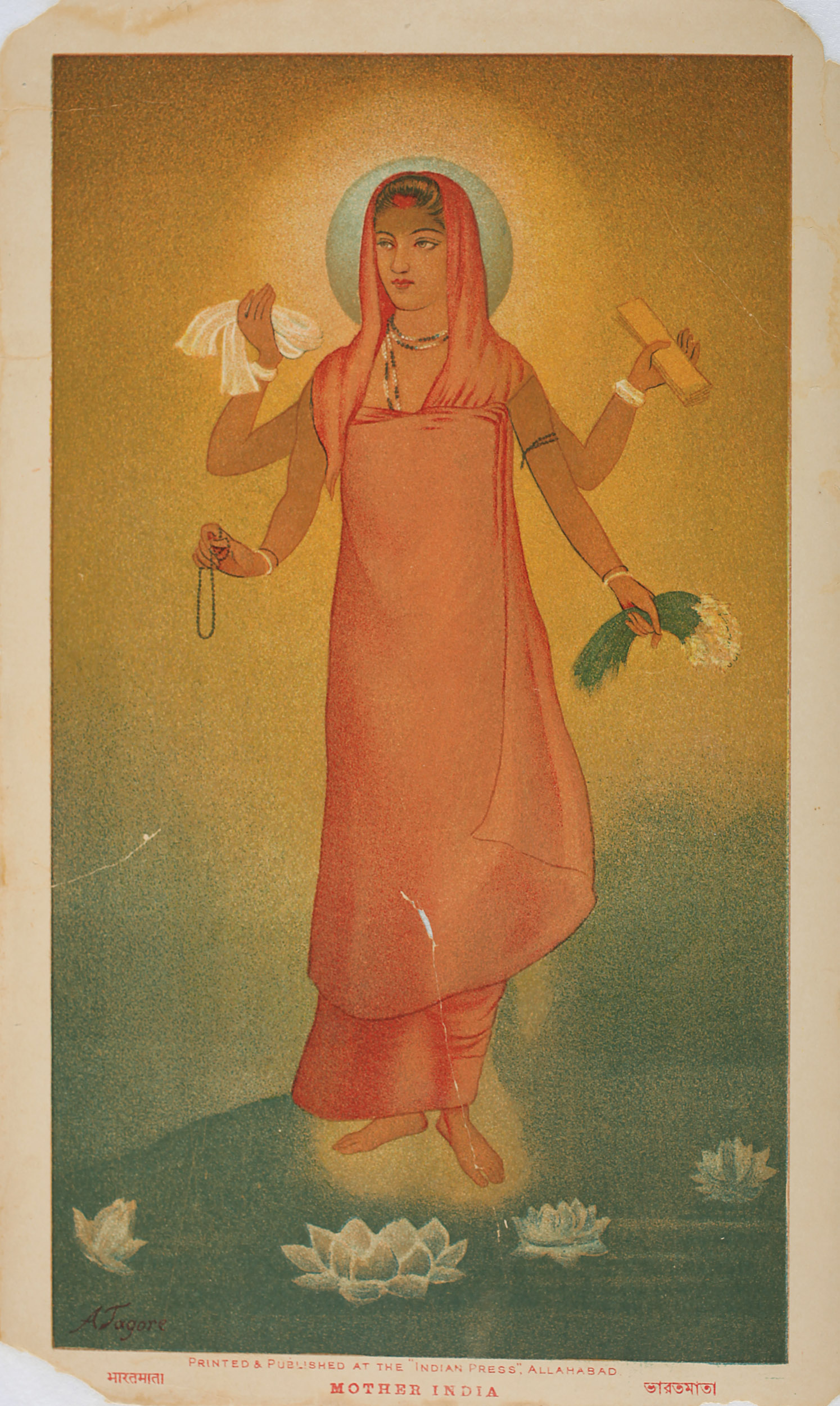
|
Abanindranath Tagore, Bharat Mata, Chromolithograph on paper. Collection: DAG |
Q. As you have noted, historians have thus far tended to focus on the ‘prose of counter-insurgency’ (in Ranajit Guha’s words), even though British artists wielded the propagandistic image as forcefully as prose histories of the revolt; and since you suggest that images don’t necessarily float free of their written implications, how do we frame a historical method of reading that can incorporate both text and imagery?
Vinay: It's quite ironic, from my perspective, that you asked this specific question. Just a few hours ago, I returned home after spending three hours with my graduate seminar where we were reading Elementary Aspects of Peasant Insurgency, which is a book written by Ranajit Guha. As it happens, Guha passed away a few months ago (on 28 April, 2023). In our session, we also examined an article he wrote, initially published in Volume 2 of Subaltern Studies, titled ‘The Prose of Counter-Insurgency.’ How might this essay help us read images (of resistance)? At the outset, I should mention that the focus of my book was to explore how Indian nationalists, rather than colonial artists, portrayed the history of the freedom struggle. In the early period there were remarkably few images created by Indian artists concerning the events of 1857. In fact, there were almost none that were contemporary to that time. I would say even the dating on the Mangal Pandey print (of 1910) is a bit early—there is no date on the print itself. The crucial point here is the absence of art truly contemporaneous to that period. It's only in the early twentieth century that we start to see works by Indian artists reflecting that era. But let's return to the initial aspect of your question, which boils down to this: when the historical records fail to provide explicit insights from the insurgent, how does one capture that voice? How do we gain access to their perspective? How can we comprehend the consciousness, sentiments, ideology, and all that motivated the insurgent, particularly when dealing with both textual and visual materials?

Unidentified artist, Nanasaheb Peshwa, 1857, c. 1910 Offset print on paper, Print: 8.7 x 11.5 in. / 22.1 x 29.2 cm., Paper: 10.0 x 14.5 in. / 25.4 x 36.8 cm. Collection: DAG
Now, consider a historical event for which we lack any visual representation, even preceding the 1857-1858 rebellion, like the Vellore Mutiny. No Indian artwork exists from that period, and indeed, there are few works from a later time too, except perhaps for a few that were created more recently. If we consider this Mutiny, the question arises: how do we understand the thoughts of the insurgents? Ranajit Guha suggests that we have access to what he terms the ‘prose of the counterinsurgent’. In this context, these are the colonial officials tasked with suppressing events like the Vellore Mutiny or the 1857-1858 rebellion. Guha proposes a strategy for discerning the mindset of the rebel by examining the writings and accounts of these counterinsurgents. Often, we find fragments or snippets that provide insights into the insurgent's consciousness through these colonial perspectives. Consider this scenario: if a colonial official overhears rebels making statements, he then writes to another official, quoting what he believes he heard. This becomes a form of the rebel's testimony, albeit filtered through the perspective of the counterinsurgent's letter. This represents the straightforward approach. The more intricate method involves closely examining the writings of the counterinsurgent to identify gaps, inconsistencies, and hidden truths within the text.
The real challenge lies in deciphering the rebel consciousness through images created by the counterinsurgent. For instance, if we examine some of the engravings depicting the 1857-58 rebellion, such as those made by Charles Ball, we can see numerous illustrations of significant events. These include scenes like the storming of Delhi and depictions of individuals like Miss Wheeler defending herself against a rebel. Such images could potentially offer insights, especially by analysing the artist's unique portrayal of the insurgents. However, I don't believe the arguments that are effective when applied to texts translate as effectively to interpreting images.

Anonymous, Charge of the Highlanders before Kanpur, under General Havelock, 1858, Engraving on paper, 17.8 X 27.2 cm. Collection: DAG
When it comes to visual representations, if an artist portrays a rebel in a defiant posture, it's crucial to recognize that this portrayal is still influenced by the perspective of the counterinsurgent creating the artwork. In such cases, inferring aspects like agency becomes exceedingly challenging. That's my perspective on this matter. Nevertheless, it presents an intellectually stimulating challenge to approach it in this manner.
Q. As some historians (like Sumathi Ramaswamy) have pointed out, there were distinct gender dimensions to the nationalist image-making/producing project, tending towards masculinist celebration of ‘big men’. How do you see the role of men as political leaders, and in contrast, women—either real or idealized—being appropriated into the nationalist project? The Rani of Jhansi tends to be the sole ‘big woman’ as an exception to the general rule. Why do you think this was the case?
Vinay: I am familiar with her argument, and I briefly touch upon it in my book. Interestingly, in the case of the Rani of Jhansi, there's a subtle irony at play. In the section of my book dedicated to her, I highlight the observation of an English official named Sir Hugh Rose, who was her opponent. He remarked that the Rani was ‘the bravest and best man on the side of the mutineers’. The irony lies in the fact that, here, we have a female figure who has been celebrated in Indian history and yet she is the ‘bravest and best’, indeed the only, man.
I recall mentioning a poem in my book that we were all quite familiar with (in our schooldays), a well-known Hindi poem by Subhadra Kumari Chauhan. I won't go into the poem's content now, but it highlights how the Rani of Jhansi was highly revered. However, there's another irony here. The narrative of the Indian freedom struggle is often bookended by the events of 1857-58 where figures like the Rani of Jhansi, along with a few others like Nana Sahib, are central to this period, while at the other, closing end of this historical account, you have Mohandas Gandhi, who, interestingly, was perceived by some of his critics as being essentially feminine or womanly in nature. If the Rani of Jhansi was considered too masculine, being portrayed as the best or even the only man among men, Mohandas Gandhi, on the other hand, was perceived as the woman among the men, according to some perspectives. My point here is that we need to reconsider gender dynamics in a different light. Professor Ramaswamy is entirely correct in pointing this out. She is not the first to observe this, as it becomes quite apparent that the images themselves are heavily gendered. When women are depicted, it primarily revolves around the figure of Bharat Mata. And it's essential to note that Bharat Mata is not a specific individual but rather an iconic symbol representing enslaved India.
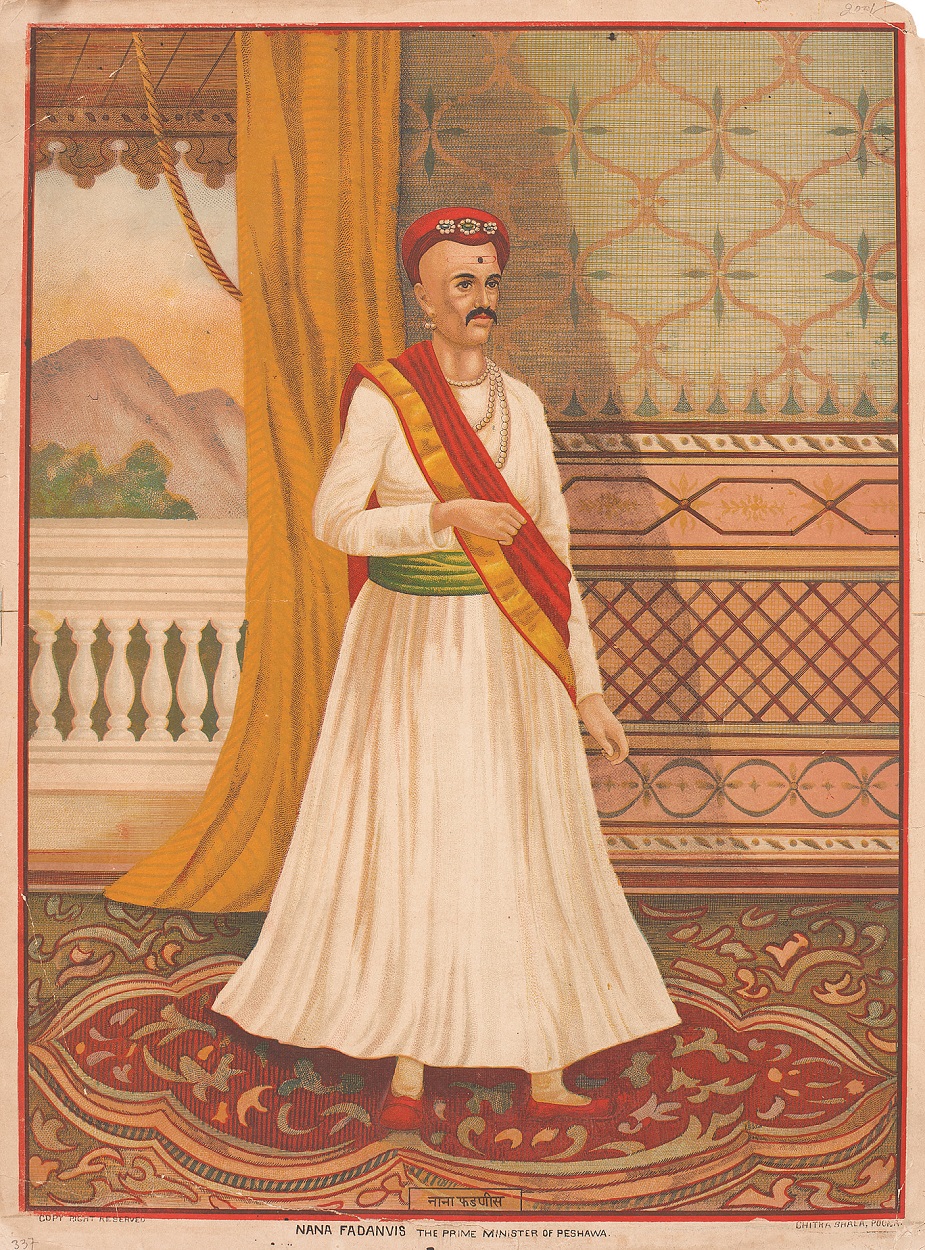
|
Anonymous, Nana Fadanvis, Chromolithograph on paper, 48.3 X 35.6 cm. Collection: DAG |

|
Unidentified artist, Hamare Veer (Our heroes), Offset print on paper, 34.8 x 24.6 cm. Collection: DAG |
It's insufficient to argue, as some might, that there were indeed images of women apart from the Rani of Jhansi. While a few other women, such as Kamaladevi Chattopadhyay and notably Sarojini Naidu, appeared in scattered prints here and there, their representation was limited. A more nuanced perspective suggests that despite the significant involvement of women, there is a noticeable gender bias or slant in the images. The paucity of images of women is all the more striking when you consider that if you look into the autobiographies of Indian women published in the 1920s and 1930s or even much later but written by women active during the ‘20s and ‘30s, a common theme emerges. They consistently mention how the non-violent nature of the movement and Gandhi's progressive views on women enabled their participation in the public sphere. Many fathers felt comfortable allowing their daughters to engage in public activities. However, despite these instances, there's no denying that the visual representations overwhelmingly lean on the side of the masculine.
We must now consider not just the concept of masculinity but also its association with muscularity. A significant portion of image-making efforts aimed to construct an idea of India's martial history. This endeavor was, in part, a response to colonial claims that India was deeply drenched in effeminacy—a notion propagated by colonial arguments dating back to the eighteenth century.
One of the chapters in my work, among the two or three that explore this topic, focuses on this aspect. For instance, there's a chapter dedicated to Subhas Bose, and another thematically explores the question of India's martial history and how artists and printers attempted to reconstruct it. When reconstructing a martial past, it was undeniable that men would (be imagined to) play a crucial role in this narrative, embodying the archetype of the masculine Kshatriya. I won’t here get into a more complex (and to many implausible) interpretation, since the images don’t easily lend themselves to it, whereby it is the Brahmins rather than the Kshatriyas who in fact embody masculinity since masculinity has to do with the cerebral and with the idea of restraint as much as it has to do with muscularity.
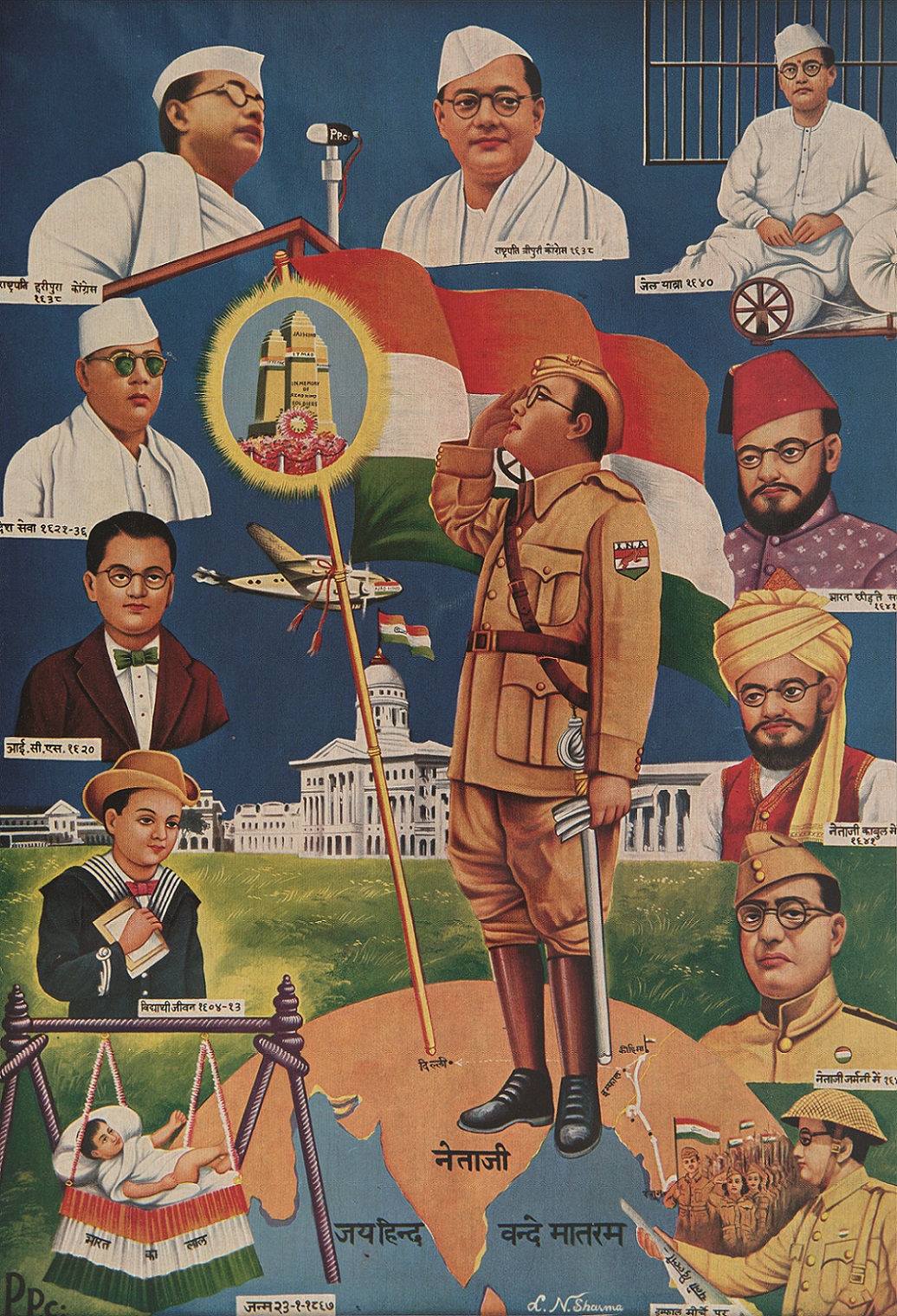
Anonymous, Subash Jiwani, Off set print on paper, 32.3 X 22.1 cm. Collection: DAG
To grasp this concept, one needs to observe how prints from a later period portray figures like Subhash Bose, the revolutionaries, or the members of the Hindustan Socialist Republican Army (H. S. R. A) such as Bhagat Singh, Chandrasekhar Azad, Rajguru, and others. In numerous images, they are aligned with historical figures like Shivaji, Marana Pratap Singh, and Prithviraj Chauhan, shaping a narrative of India's past rooted in martial valour and spirit. When artists move in this direction, it inevitably leads to the portrayal of masculinity and muscularity, defining much of the art, although not all of it.
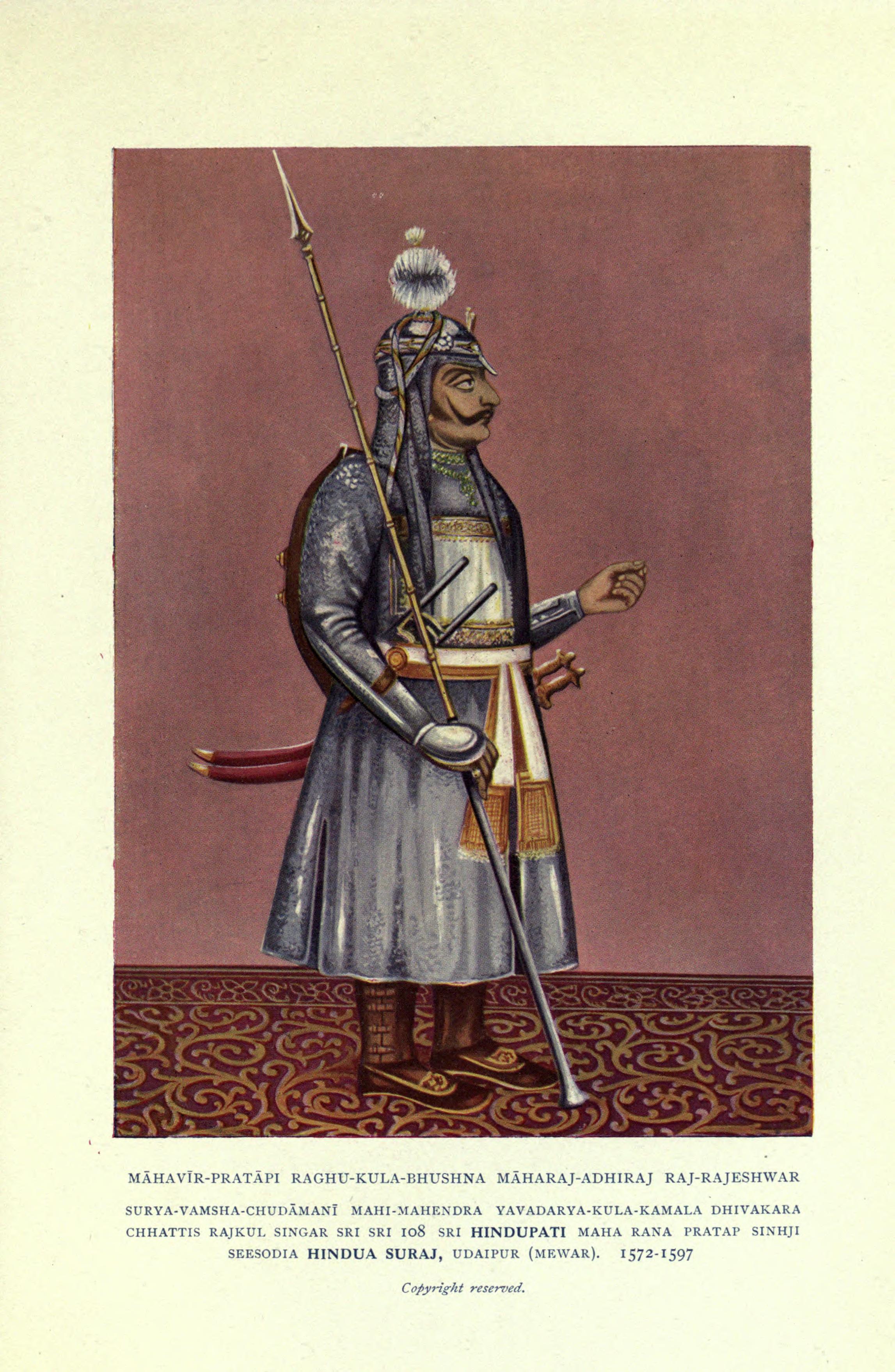
|
Unidentified artist, Mahrana Pratap. Image courtesy: Wikimedia Commons |
Q. You have also written about how oil painting was not a part of the predominant imaginary of art in an impoverished nation like India. How do we account for the practice of artists like Chittaprosad, who used a popular and cheap medium like woodcuts, and infused criticality and polemics into his images? Is it too simplistic to oppose the academic realist style/ realism with the allegorical style of popular prints that employed nationalist imagery?
Vinay: I don't entirely agree with that (binary) characterization. Additionally, regarding the initial question, you mentioned Chittaprosad, who is not creating the type of popular prints I'm discussing, nor is he primarily involved in oil paintings, right? We're dealing with different aspects here. The introduction of oil painting altered something, especially in the West. I don't have time to delve into this extensively, but it changed things because oil paintings project a different kind of power, if I may put it that way. The main point here is that Indian artists, for the most part, might not have had the financial resources and means to extensively engage with oil painting. Just as there exists a political economy behind knowledge production, there's also a political economy behind print and art production.
Indeed, we must acknowledge that the concept of an ‘artist’ in India around 1900 is of uncertain meaning. Comparatively speaking, in Europe the term holds a different significance at this time owing to the fact that numerous individuals had, over a fairly long period of time, been involved in what can be termed a political economy of the artwork. This included, besides artists, gallery owners, curators, art producers, sellers, clients, connoisseurs, and critics like John Ruskin, who was not only an art critic but engaged in various other pursuits. Additionally, there were individuals involved in selling paintbrushes and colours, shaping a complex network associated with the art industry.
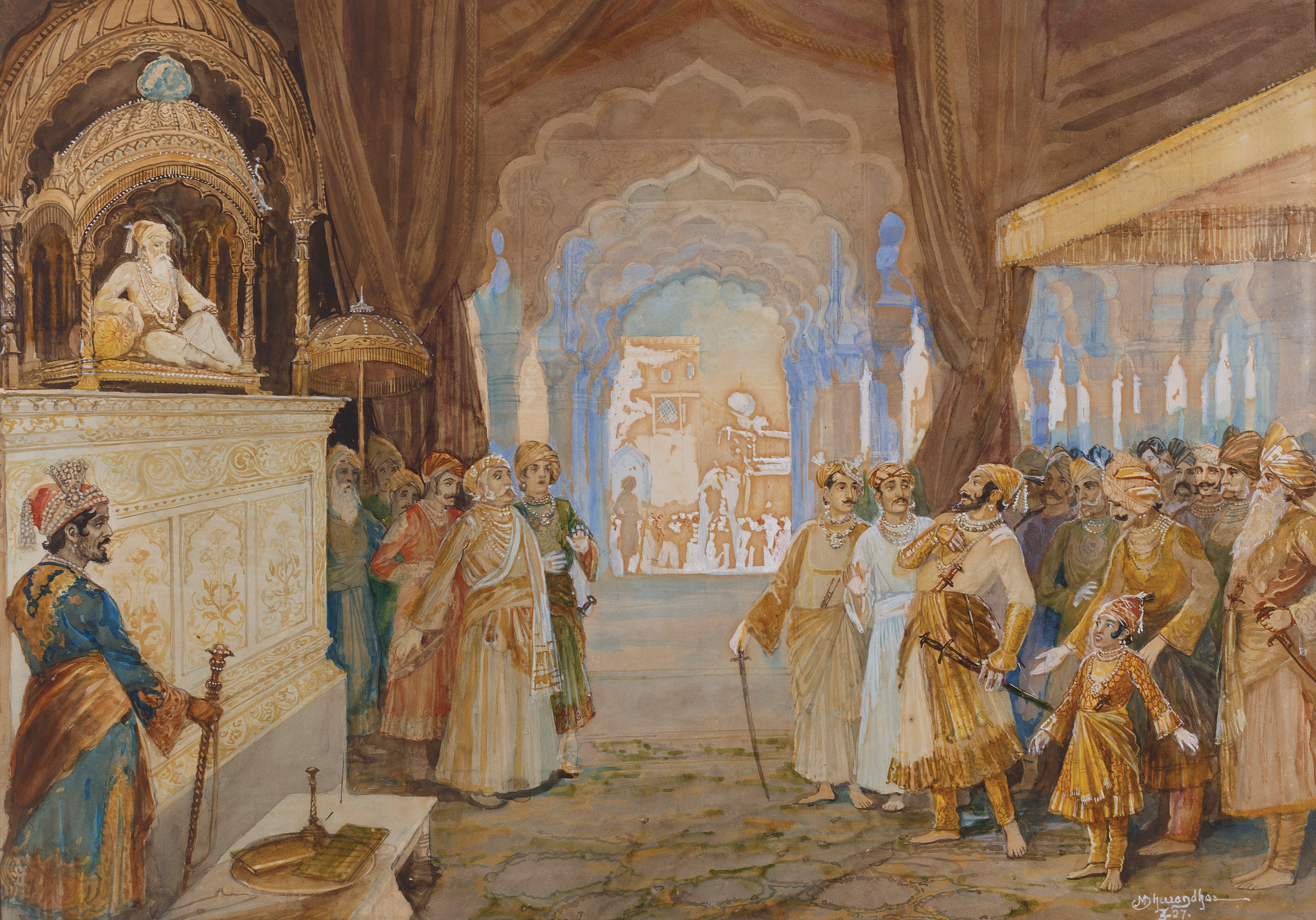
M. V. Dhurandhar, Aurangzeb's Court, Watercolour on paper, 48.0 x 69.0 cm. Collection: Directorate of Archaeology and Museums, Government of Maharashtra (Shri Bhavani Museum and LIbrary, Aundh, Satara)
It's not coincidental that Indian artists turned to mediums such as the prints we are discussing. To truly grasp the significance of artists like Chittaprosad and the woodcuts he created, it's essential to consider the context. As you are aware, since DAG holds a substantial collection of Chittaprosad's works, he had certain political loyalties, notably leaning towards Marxism. Moreover, Chittaprosad gained firsthand experience of events such as the Bengal famine in 1943, and he contributed to party newspapers. So, when analysing his work, it's crucial to acknowledge the diverse influences and locations that shaped his artistic perspective. Comparatively speaking, there is a notable distinction between the grand painting he made depicting the Royal Indian Navy Mutiny (of 1946) and much of his other work, primarily woodcuts. This type of work, including pieces related to the Bengal famine, was more accessible and could be easily shared with the public. It's worth considering the sketches he made for party newspapers, which later became a part of his body of work.
Additionally, art critics often categorize his work as modernist. This classification stems from his unique approach, deviating from traditional realism and embracing forms of caricature. Chittaprosad intentionally exaggerated certain figures to achieve specific political effects, setting his work apart from the nationalist prints that were prevalent during the 1930s and 1940s.
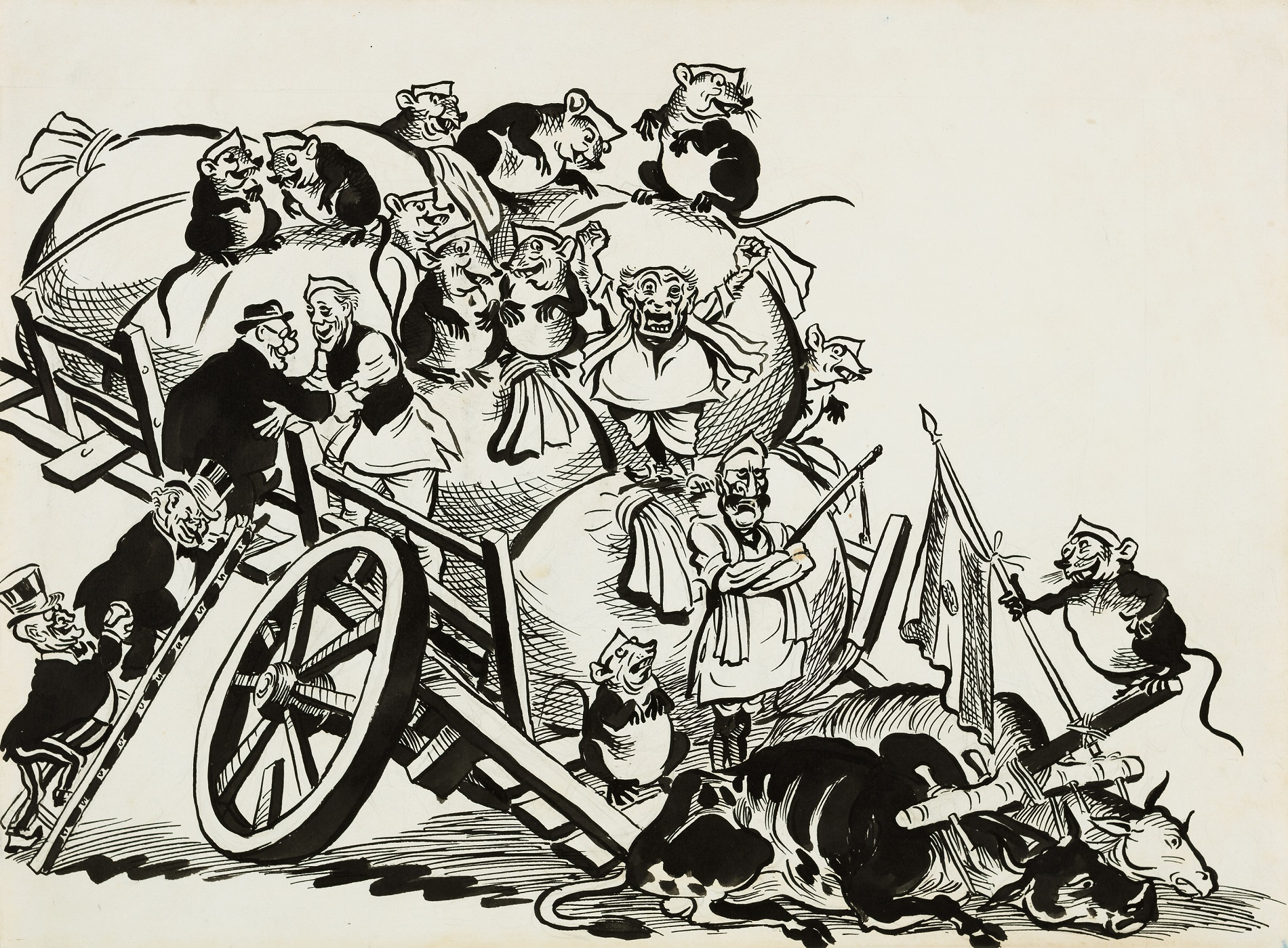
Chittaprosad, Untitled, Ink on paper. Collection: DAG
Q. The figure of Gandhi—especially after events like the Salt Satyagraha—appears to be a nucleus around which both modernists like Nandalal Bose, Ramendranath Chakravorty, and popular printmakers coalesce successfully. Why do you think this was the case?
Vinay: All available evidence indicates that Gandhi was undoubtedly unique and sui generis. This distinction becomes evident when examining the artworks that depict him. To truly get into this topic, a meaningful discussion would require a close examination of specific images. When we observe the body of work that revolves around Gandhi, including pieces created by artists from various art schools (which, by the 1930s, were becoming more prevalent), it's crucial to recognize the shift from the artistic landscape around 1900. At that time, the concept of an artist, to the extent that one can even speak of ‘the artist’ in India at the turn of the century, was significantly different from what it had become by the 1930s.
As for the question of why Gandhi became a focal point, it's not merely due to his exceptional and distinctive leadership qualities. Gandhi's significance lay in his role as a moral exemplar, a quality that set him apart from everyone else. This is precisely what I mean when I emphasize that Gandhi's portrayal is distinctive and unparalleled. His image is depicted in ways that set him apart from anyone else. Here, I differ significantly from a prominent critic, Christopher Pinney, who incidentally is a friend, but with whom I have some differences of opinion. There has been a tendency, especially over the past couple of decades, to glamorize figures like Bhagat Singh and similarly there is a concerted attempt to diminish Gandhi's significance. However, when we examine hundreds of prints spanning from the mid-1920s to Gandhi's assassination, a clear pattern emerges.
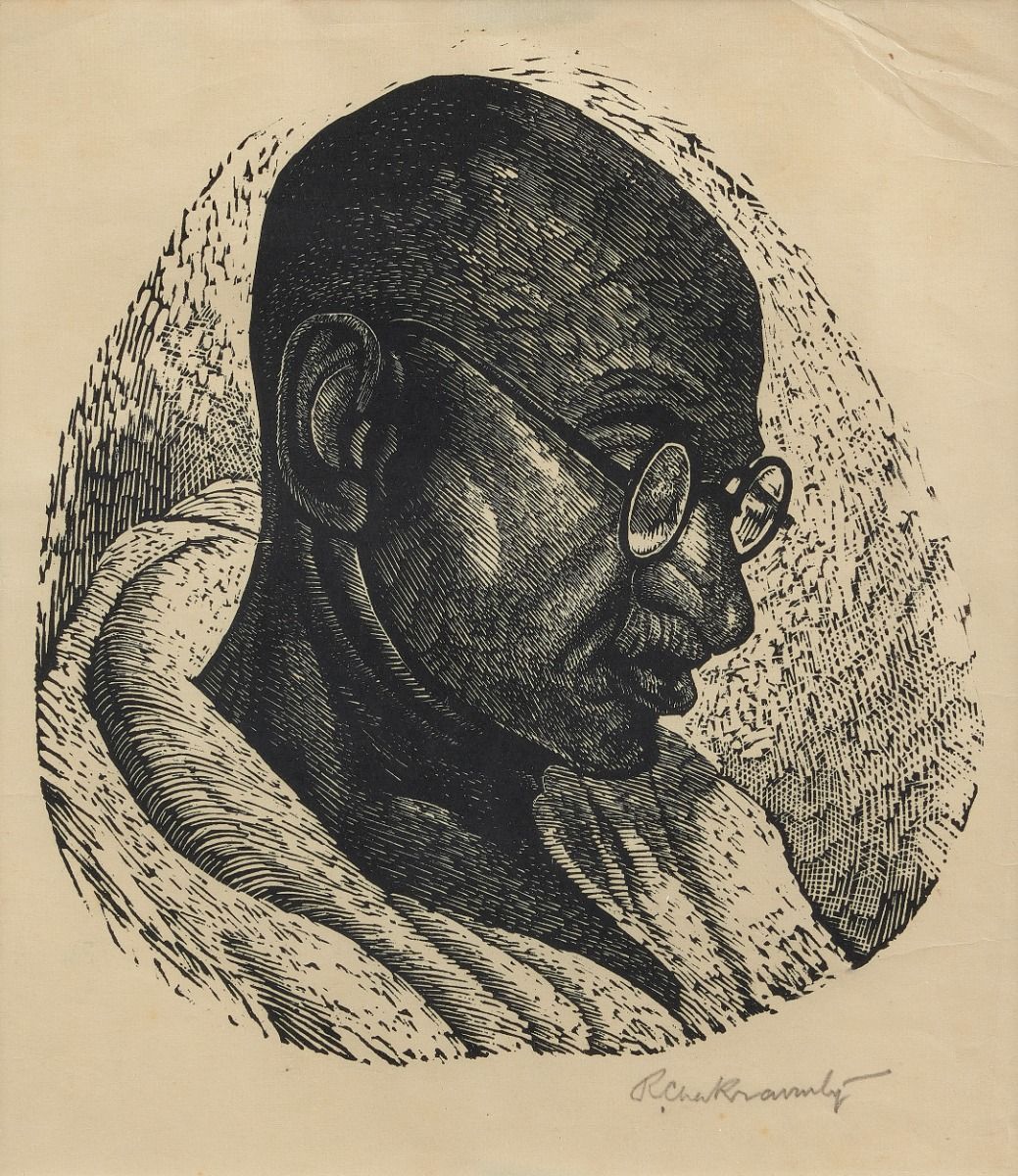
|
Ramendranath Chakravorty, Bapuji, Early 20th century, 8.2 x 7.2 in. / 20.8 x 18.3 cm., Wood engraving on paper. Collection: DAG |
In these prints featuring multiple political figures, including iconic ones like Gandhi, the latter is often depicted alongside revered spiritual leaders such as Jesus and the Buddha. This unique portrayal distinguishes him from other political figures like Subhas Bose, who are never depicted in a similar manner alongside spiritual icons like Jesus, the Buddha, or Nanak. Gandhi's presence is evident both in spiritual prints and political depictions. One could argue that this echoes a debate that was raging in the world (so to speak) of prose, now finding resonance in the realm of visual representation. This debate revolved around the question of whether Gandhi should primarily be regarded as a saint who engaged in politics or as a politician who acquired an aura of saintliness. The question of whether he was fundamentally a saint or a politician lingered for decades, reflected in a lengthy list of publications from 1920 onwards. Gandhi's presence in visual representations took diverse forms. He appeared both within various groupings and in profound isolation, displaying a unique singularity; he is with the masses, part of a collectivity, and yet he also emerges as a distinct individual. In some prints, to put it this way, he stood with the masses, yet somehow remained above them, embodying a presence that was simultaneously with and above the people. He was also depicted alongside figures like Bose, (Sardar Vallabhbhai) Patel, and (Jawaharlal) Nehru, among countless other combinations. The richness of this iconography surpasses any other political figure in India; not even the figures of Bhagat Singh, Lajpat Rai, Nehru, or Subhas Bose achieved a comparable depth in visual representation.
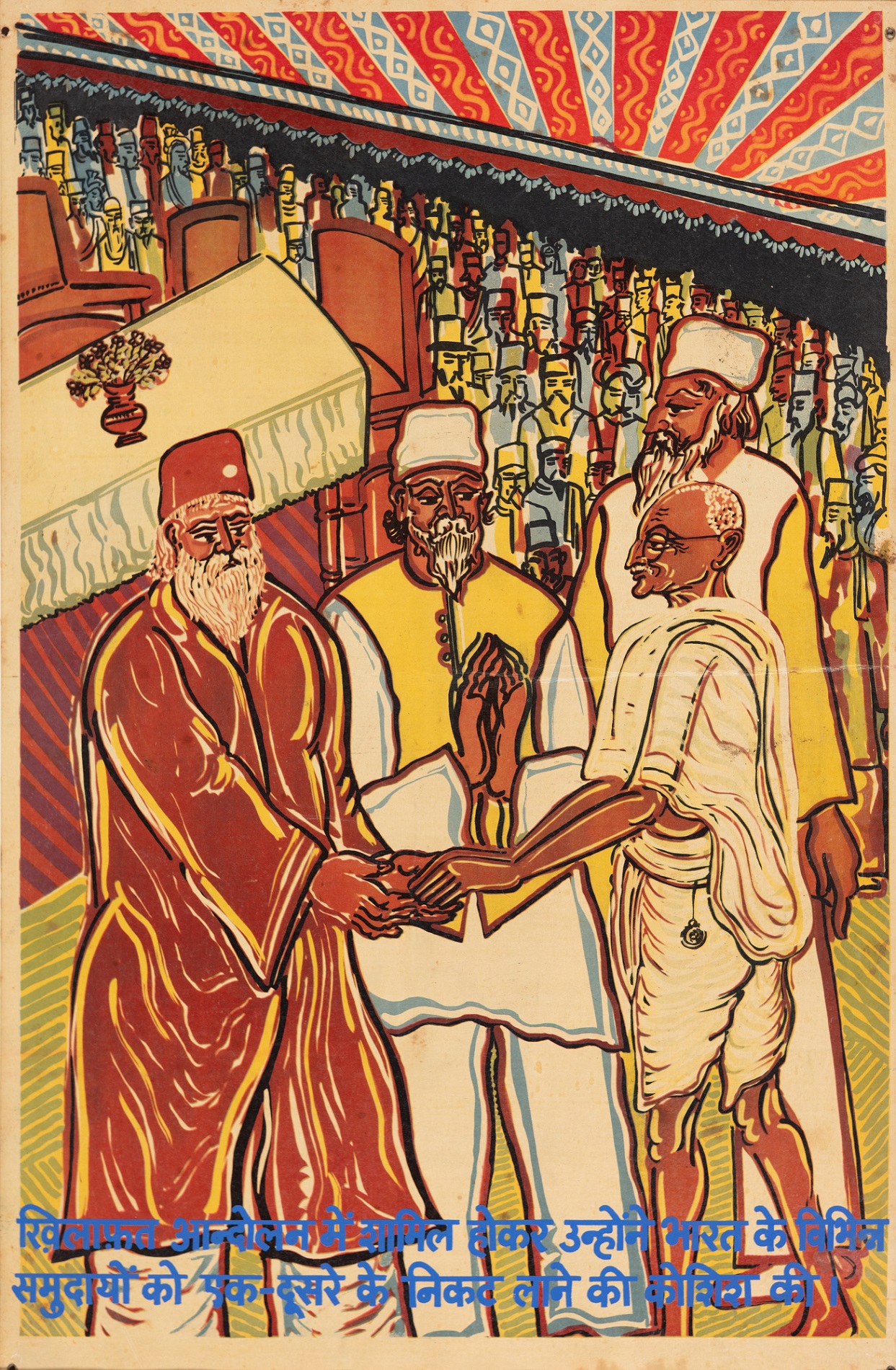
|
Unidentified artist, Gandhi poster, c. 1960, Offset print and serigraph on paper, 72.4 x 48.3 cm. Collection: DAG |
My intention here is not to establish a hierarchy among these figures, but rather to emphasize that these images convey a narrative. They tell a story in their own distinctive manner, illustrating how Gandhi truly became the central figure around whom everyone, including all artists and image creators, coalesced.
Q. In the 1940s, with artists like Chittaprosad, Gopal Ghose, Qamrul Hassan and others, one sees an attempt to introduce complications into the homogenous narrative of nationalism where the oppressors were mostly British and the liberators an undifferentiated mass of Indians. The depredations of capital, India’s global power, communal violence, the famines of Bengal: these were more often adopted as subjects than the ones normally seen in popular prints depicting the freedom struggle. How do we differentiate between the self-consciously popular practices adopted by these artists and those of the popular printmakers?
Vinay: It’s important to consider the limitations I faced while compiling the book. Access to images was a primary constraint, leading to choices based on availability and practicality. Procuring images involved navigating challenges such as locating copyright owners, which can be a time-consuming process. However, I also included two images of Gopal Ghose's work in my book (ensuring his contribution was not overlooked). These two images serve as significant examples of the work of a major but (to the wider public) little-known artist. One depicts a car engulfed in flames, representing the Calcutta riots of 1946, captured in a watercolour painting. The other portrays the burning of a liquor shop from the same series of paintings and the same year, 1946 (done a few months before the Direct Action Day riots broke out). I specifically chose these images to highlight the diverse range of artworks that existed during that time. While I had more access to Chittaprosad's images, my access to Gopal Ghose's work was limited. It's worth noting that most of Ghose's work is unrelated to the events leading up to 1947.

Gopal Ghose, Burning Liquor Shop: Calcutta Riots, 11-14 February 1946, 1946, Watercolour. Collection: British Library, London
These paintings raise a fundamental question you had asked earlier about the political image. Despite depicting the fires ignited by communal hatred, how do they fit into the narrative of the freedom struggle, as indicated by the book's subtitle, ‘The Art of the Freedom Struggle in India’? It becomes evident that just as writers and politicians grappled with the issue of communalism, artists too had to navigate this complex terrain. One strand of Marxist historiography characterizes communalism as a form of false consciousness, where individuals are led astray from the true goals of nationalism. Communalism, in this view, distorts nationalist aspirations, pitting different religious communities against each other. While there are critiques of this Marxist perspective, it's essential to acknowledge communalism's role in shaping the history of nationalism, particularly in the 1930s and 1940s. The creation of Pakistan, a Muslim-majority state, after the nationalist movement's culmination underscores communalism's impact.
Gopal Ghose's work on the Calcutta killings provides unique insights. His painting depicting a car engulfed in flames with broad brushstrokes capturing the leaping flames and thick black smoke conveys a sense of explosion and chaos. This artwork sheds light on the turbulent events of the time, (recorded at the time of their happening). My focus in this narrative concludes with the birth of two separate nations, India and Pakistan, marking a significant historical juncture.
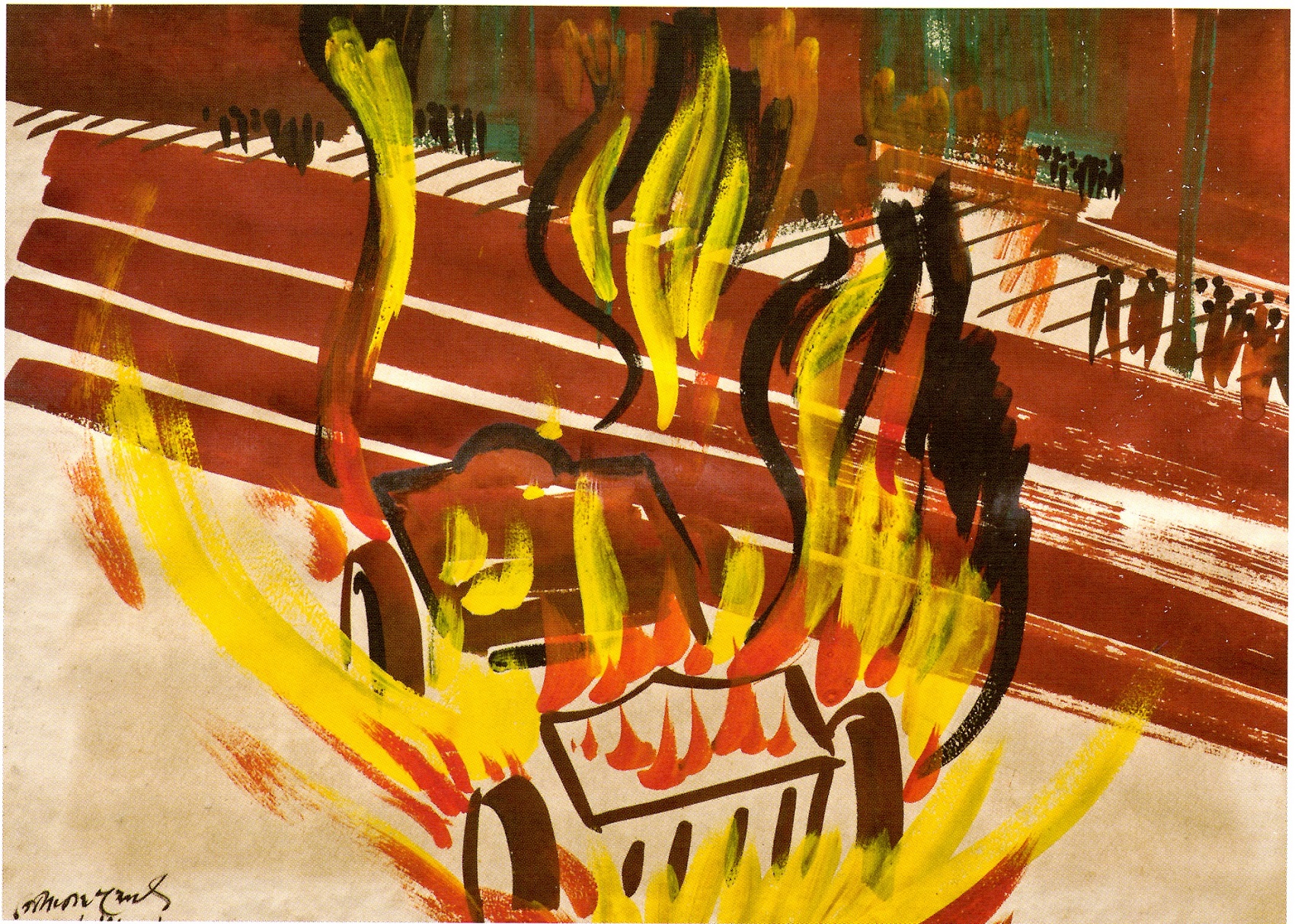
Gopal Ghose, Car in Flames: Calcutta Riots, 11-14 February 1946, 1946, Watercolour. Collection: Anonymous
Q. Finally, since you are also a historian of history as a discipline in India, I wanted to know what a visual history of the freedom movement can tell us that prose histories don’t, especially for you? And how did you select the images in the book?
Vinay: Let me address the latter part of your question first. My fascination with Gandhi spans several decades, during which I've extensively studied him. Although I haven't written a book solely dedicated to him, I've written numerous essays and op-ed pieces on various aspects of his life and philosophy. He embodies a profound sense of both spirituality and secular principles, making him an exceptional and complex figure. From my perspective, Gandhi defies conventional categorization and requires a nuanced understanding beyond common templates.
Several years ago, I began collecting a vast array of images of Gandhi with the intention of writing a book. While I had a contract with a publisher at one point, the project remained unfinished. Over time, I accumulated these images primarily from secondary sources, including other books, and a significant portion of this collection has never been utilized in any of my previous works. Notably, many of these images come from international publications, spanning languages such as German, French, Spanish, Portuguese, Dutch, Italian, and Belgian. These illustrations and cartoons, originating from magazines and newspapers in the 1930s and 1940s, showcase Gandhi's global significance as a historical figure. The quality and impact of some of these visuals are truly remarkable, emphasizing Gandhi's status as a world-historical figure, particularly following his iconic Salt March (of 1930). This transformative march catapulted Gandhi into the realm of global historical significance. Its influence reverberated worldwide, inspiring civil rights activists, many of whom, especially the prominent leaders, were well-read in Gandhi's philosophy. It's a common phenomenon for movements to become synonymous with a key individual, like Martin Luther King in the context of the civil rights movement (in the United States of America). However, speaking only of India, Gandhi doubtless possessed an exceptional singularity—thus an extensive archive of visual representations of Gandhi which has barely been explored thus far in the scholarly literature.
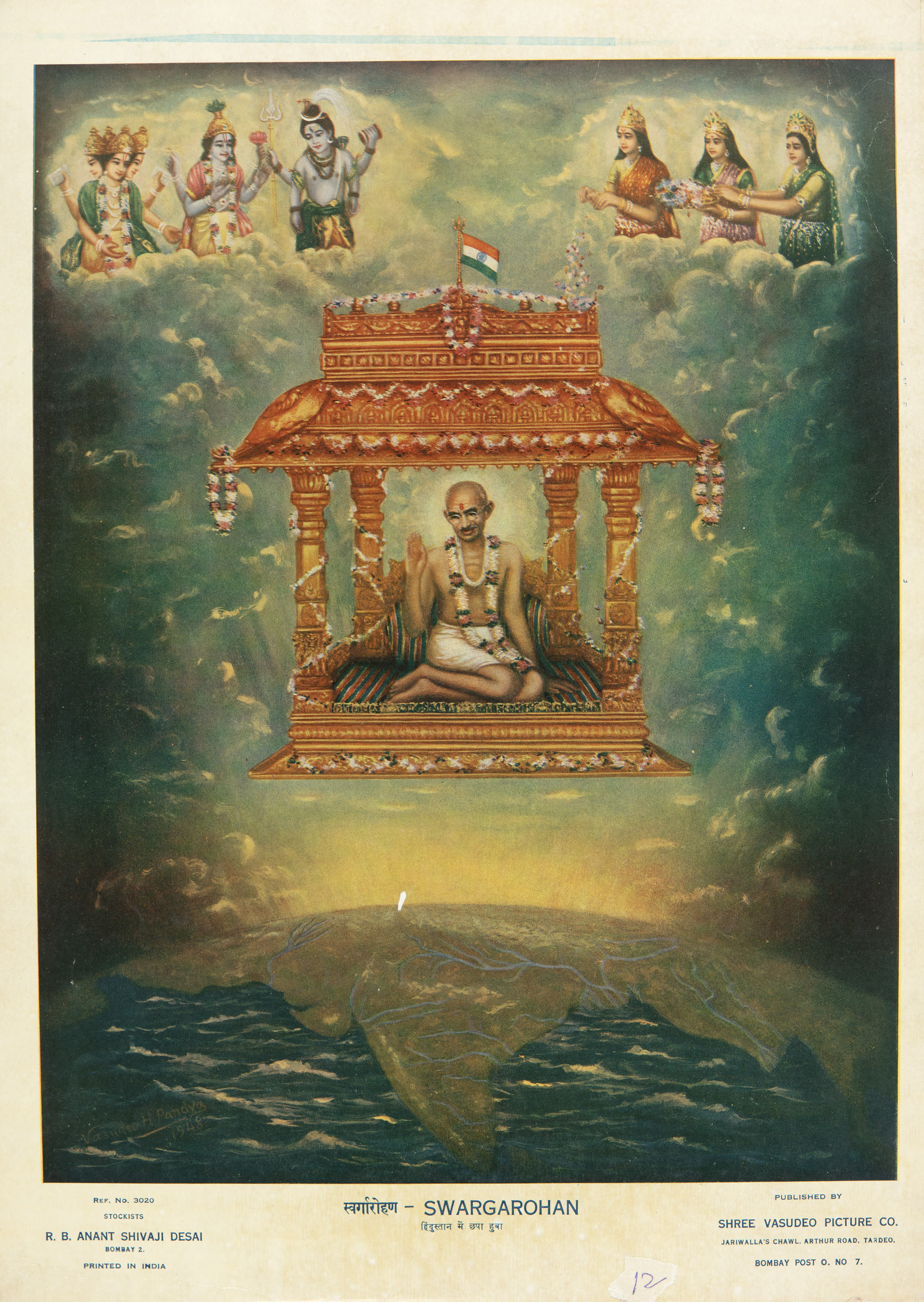
Anonymous, Swargarohan (Ascension), Oleograph on paper, 48.8 X 34.8 cm. Collection: DAG
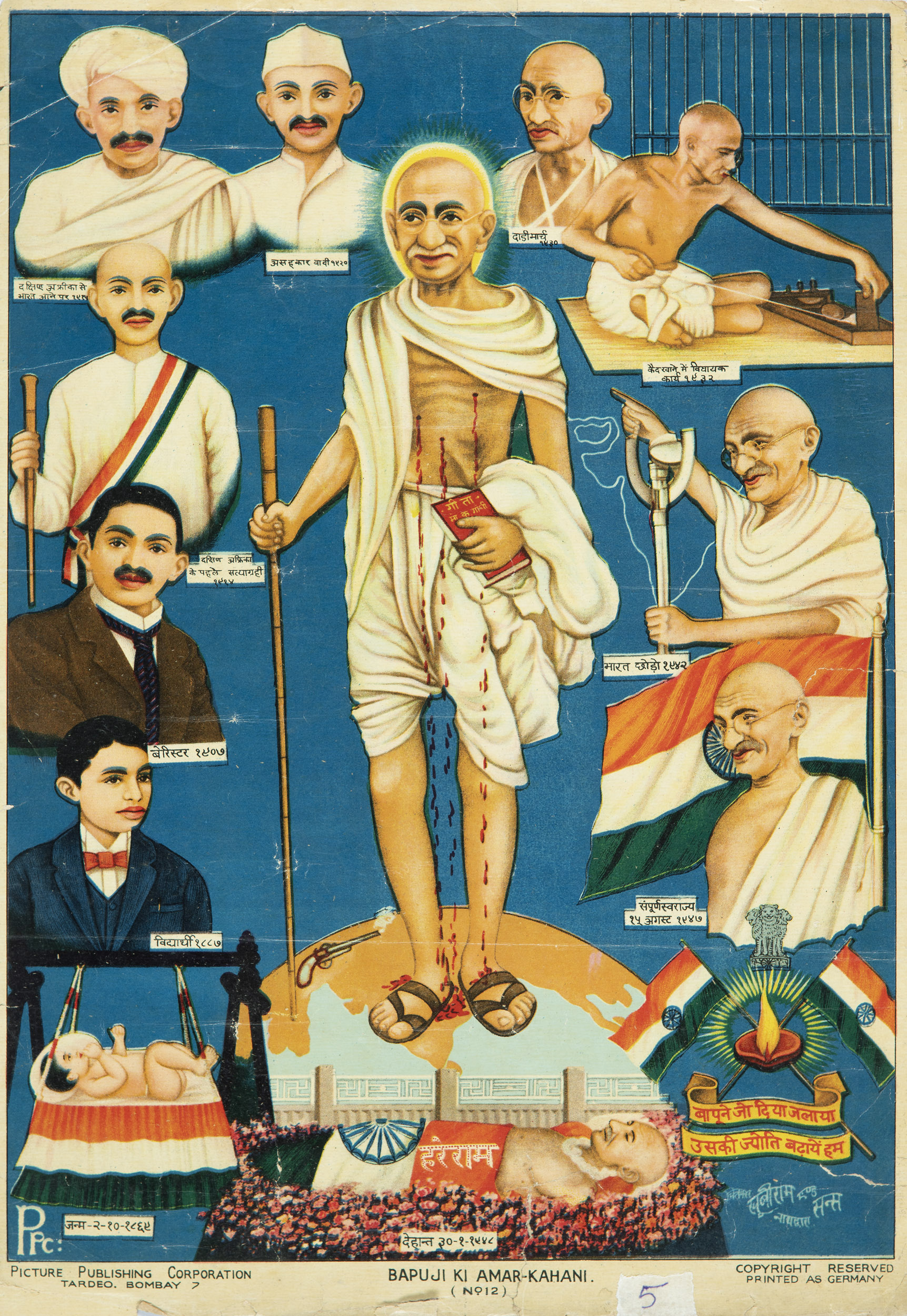
|
Anonymous, Bapuji Ki Amar Kahani (Bapuji's Immortal Story), Oleograph on paper, 36.1 X 24.6 cm. Collection: DAG |
An archive such as this does not merely exist but has to carved out and created by the scholar. One must contemplate how to collect and interpret these images, considering their implications and how they can be strategically utilized to make specific arguments. While this work encompasses various figures and themes, including chapters centered around Gandhi, Subhas Chandra Bose, Maharana Pratap, Bhagat Singh, and the iconic representation of Bharat Mata, Gandhi's prominence remains undeniable. Certainly, some of the images convey the gist of the narrative of early nationalists like Dadabhai Naoroji and Romesh Chandra Dutt, depicting what they referred to as the ‘drain theory’. These visuals illustrate how India was systematically depleted of its wealth under colonial rule.
About five or six years ago, I was approached by Pramod Kapoor, the then publisher of Roli Books, a publishing house that I knew for their high-quality art books. Initially intended to be a shorter book, the project expanded as I went deeper into the subject matter. The book aimed to explore how Indian artists perceived the freedom struggle, addressing the essence of your earlier question: what insights can art offer that texts might not? I want to emphasize that the images should not be considered as mere supplements to the text; they're not intended to complement or bolster the written narrative. Instead, I propose viewing the images as entities that craft their own distinct representation of India. In this context, the visuals articulate a narrative that runs parallel to the textual account. This encourages us to consider a few key points. The first point to consider is the historical privileging of text over images in most cultures. However, in our own time, this norm has been challenged by several factors. There has been a significant shift in academia, particularly in disciplines like anthropology, cultural studies, and history, where scholars embraced the ‘visual turn’ three to four decades ago. During this period, images gained recognition for their authenticity, resonance, and ontological significance, establishing their own primacy and unique field of experience that texts might not offer. This shift highlights the importance of studying images in their own right. Furthermore, in today's generation, there is a heightened sensitivity and receptiveness towards images, making them more integral to our understanding.
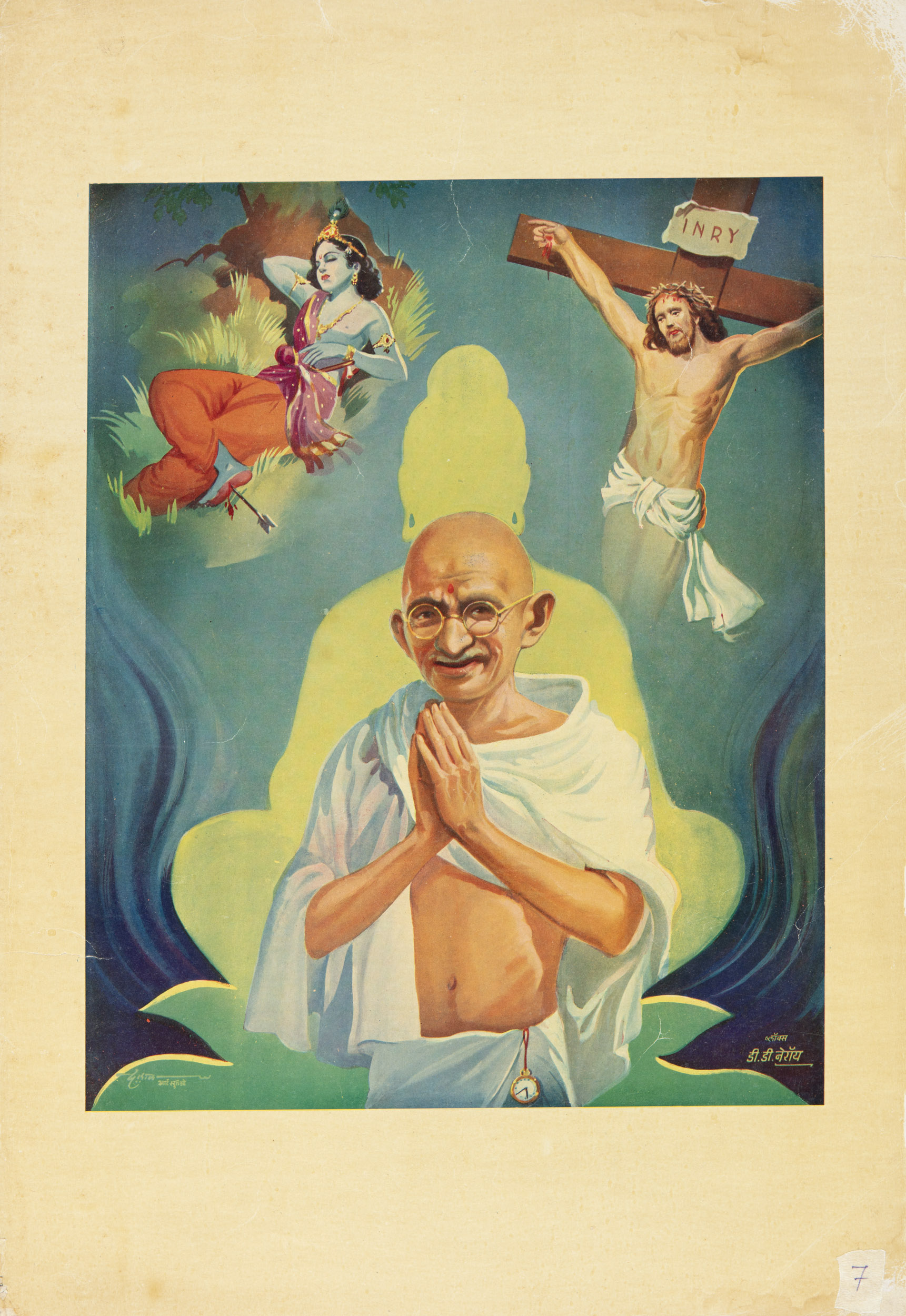
|
Anonymous, Untitled, Off set print on paper, 50.8 X 35.6 cm. Collection: DAG |
And this brings us to the delicate dance between images and text, akin to a jugalbandi (a musical duet where artists complement each other's performance). What unique role does the image fulfil that the text doesn't?
Let's consider a straightforward example. To comprehend what Gandhi signified to the people of India during his time, I often turn to the work of historians like Shahid Amin, whose insightful piece ‘Gandhi as Mahatma: Gorakhpur District, Eastern UP, 1921-2’ explores how Gandhi was perceived by the common folk, how he became the ‘Mahatma’ in their eyes. Amin's narrative is rich with captivating stories, illustrating the importance of storytelling in shaping these perceptions. One such story revolves around a mass meeting in Gorakhpur during the Non-Cooperation Movement in the early 1920s, a time when Gandhi's fame had spread far and wide across India, despite the limited means of communication available back then.
In Amin’s rendering, the locals in Gorakhpur eagerly anticipated Gandhi's arrival, yearning for his darshan, his divine presence. However, this anticipation led to an interesting incident on a train journey. Gandhi, utterly exhausted from his ceaseless engagements, dozed off in the railway carriage. When the train made a stop, people boarded, fervently seeking Gandhi's darshan. His devoted secretary, Mahadev Desai, found himself in a predicament. Not wanting to wake the fatigued Gandhi, he impersonated Gandhi, allowing the eager crowd to believe they had indeed received Bapu’s divine blessings.
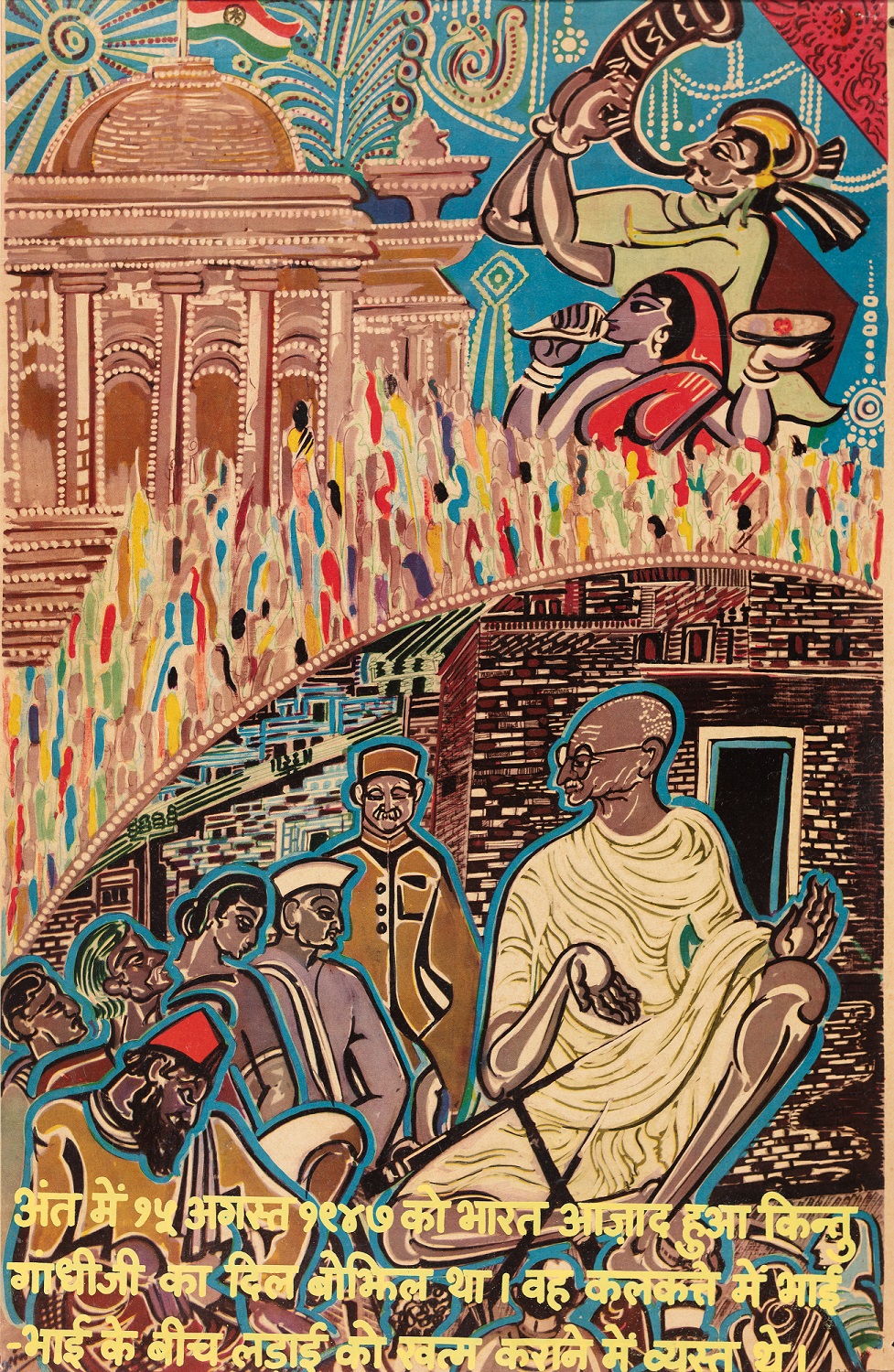
|
Unidentified artist, Gandhi poster, c. 1960, Offset print and serigraph on paper, 72.9 x 48.3 cm. Collection: DAG |
This story, while incredible, raises profound questions about the concept of darshan and its relationship with the Hindu worldview and even the Mughal understanding of darshan. The text offers a unique perspective, unveiling intricate layers of thought. However, when examining images of Gandhi, I find myself asking similar questions: How did the people perceive him? How did they construct this divine image of Gandhi, especially in today's context, where conflicting views on him persist in India, ranging from adulation to vehement criticism? Despite the criticisms that can be leveled at Gandhi, his legacy continues to evoke diverse responses.
The objective here is to immerse oneself in the ethos of that era, to truly understand the mindset of the people; and they absorbed the idea of Gandhi as the ‘Mahatma’, generally rendered into English as ‘great soul’ but a term which, as Ananda Coomaraswamy wrote, signifies the enlightened one, and even more precisely one who lives more in the spirit than in the flesh. When I examine these images and observe the naturalness with which they depict Gandhi, cradled in the lap of Mother India akin to the Pieta, or placed alongside revered figures like Buddha and Jesus, it strikes me with a revelation. It becomes evident that he was indeed regarded in a divine light.
Moreover, this led me to a realization that hadn't occurred to me while poring over the numerous texts about Gandhi. We must perceive Gandhi as the final torchbearer of the Sant tradition. I emphasize, not saint, but Sant tradition. This tradition, the same one that bestowed upon us luminaries like Tulsidas, Namdev, and Gyaneshwar, including remarkable women such as Meera Bai, celebrated the great devotees [bhaktas] who roamed the Indian countryside, and Gandhi can be understood as the last embodiment of this venerable lineage. In response to your question about the insights gained from these images, they reveal that significant parts of the country unequivocally regarded him in this divine light. The clarity provided by these images surpasses the declarations that merely acknowledge Gandhi as a great and supreme figure.
To take another example of what the images reveal that the text might not altogether be clear about, when we consider the images that invoke India’s martial past, they offer valuable insights into the modern-day turn to a muscular Hinduism. Concepts like the ‘56-inch chest,’ a term associated with Mr. (Narendra) Modi, find their historical roots in these martial-themed prints. This represents the latest attempt to foster a particular sense of martial prowess, showcasing a continuity in this endeavor.

|
Dhiren Gandhi, Love—The Sustainer, 1943, Woodcut print, 36 x 27 cm. Collection: Anil Relia, Ahmedabad, courtesy: Vinay Lal |
related articles

Conversations with friends
The Making of the Dhaka Art Summit: Behind the scenes with the Curator
February 01, 2023
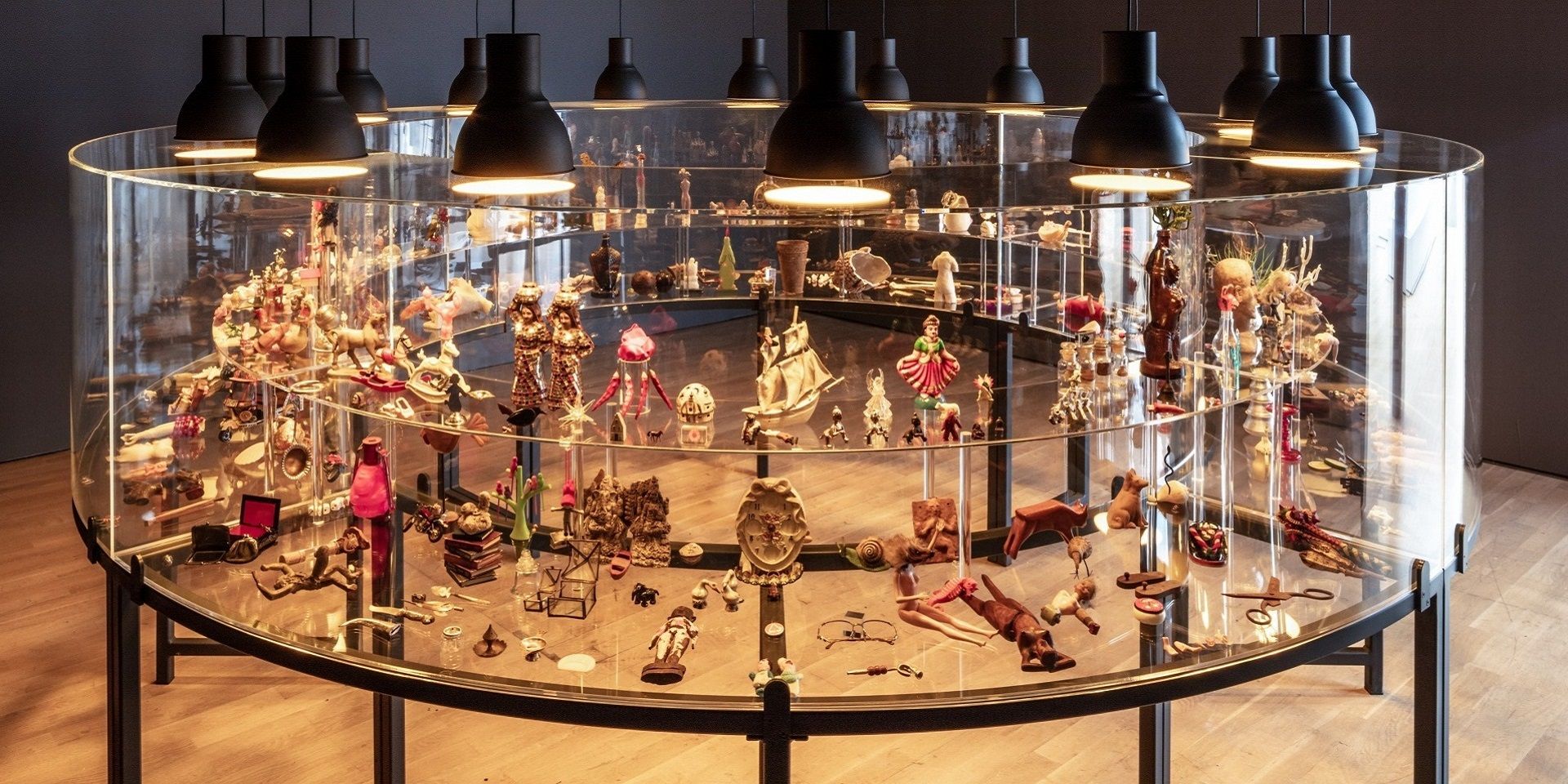
Conversations with Friends
Conscious Collecting with Asia Art Archive and Durjoy Rahman
Editorial Team
March 01, 2023

Conversations with Friends
Mysteries of Indian Art: A Conversation with Mamta Nainy
The Editorial Team
May 01, 2023
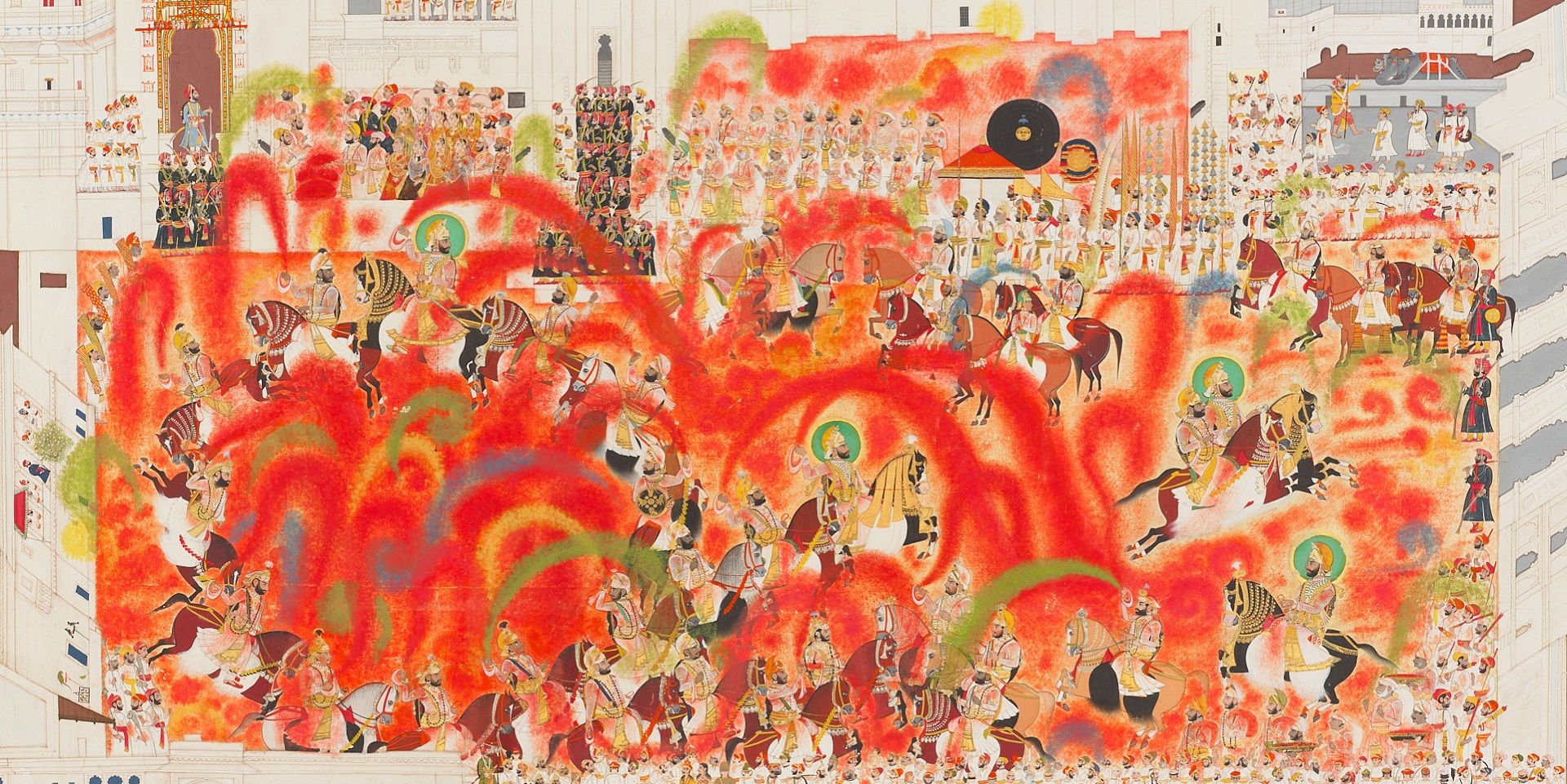
Conversations with Friends
Debra Diamond on Royal Udaipur painting at the Smithsonian
Ankan Kazi
June 01, 2023

Conversations with Friends
Imaging Water: A Conversation with the Smithsonian's Carol Huh
Ankan Kazi
July 01, 2023

Conversations with Friends
Debating secularism in South Asian Art with Tapati Guha-Thakurta
The Editorial Team
August 01, 2023

Conversations with Friends
Remembering Ambadas with art critic Prayag Shukla
Ankan Kazi
August 01, 2023
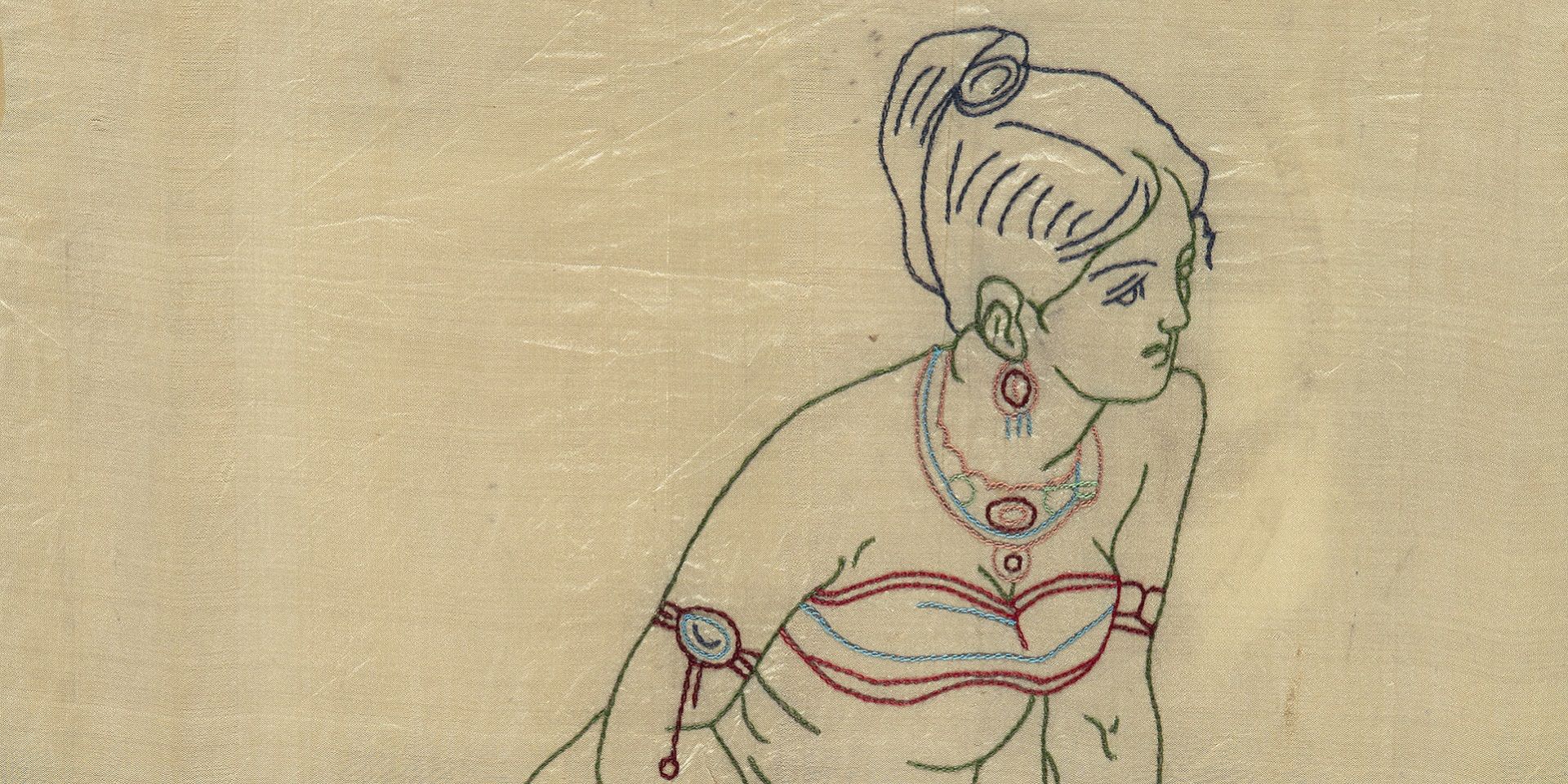
Conversations with Friends
Discovering the lives of Bengal's women artists with Soma Sen
Ayana Bhattacharya
September 01, 2023
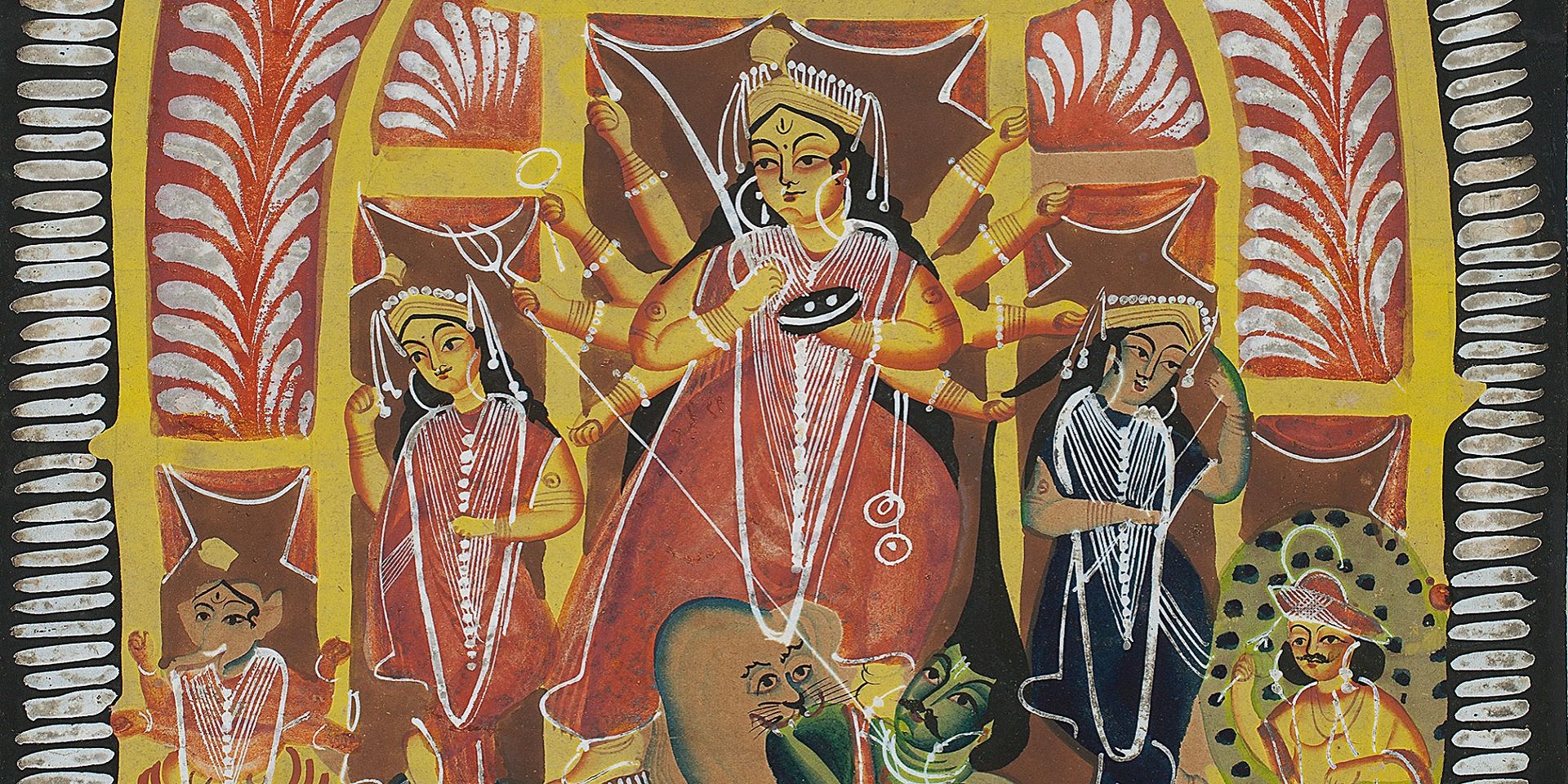
Conversations with Friends
Debating secularism in South Asian Art with Dr. Guha-Thakurta II
The Editorial Team
September 01, 2023

Conversations with Friends
Becoming New Delhi: A Conversation with Swapna Liddle
Ankan Kazi
October 01, 2023
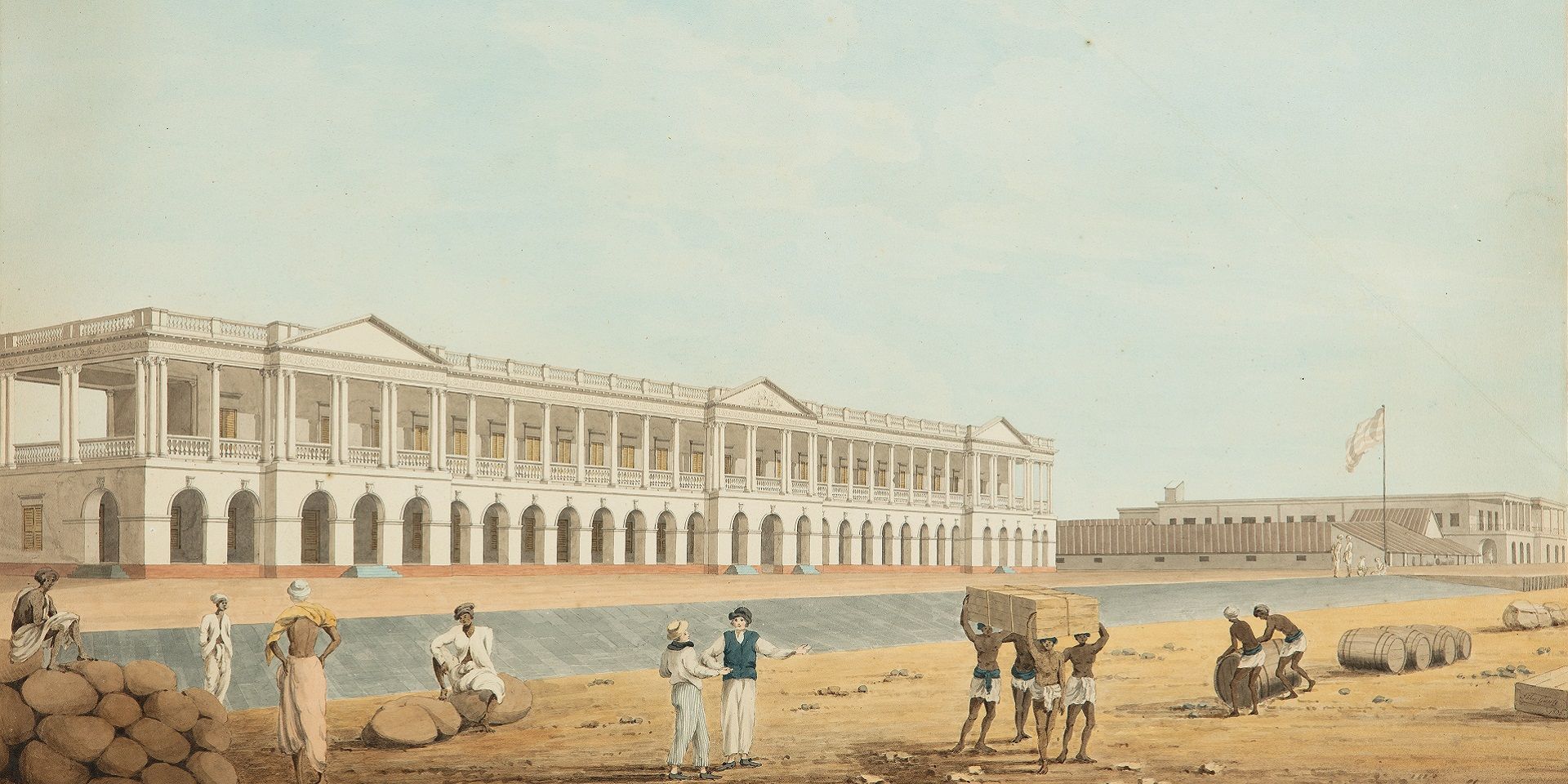
Conversations with Friends
Building an Empire: A Conversation with Rosie Llewellyn-Jones
Ankan Kazi and Giles Tillotson
December 01, 2023
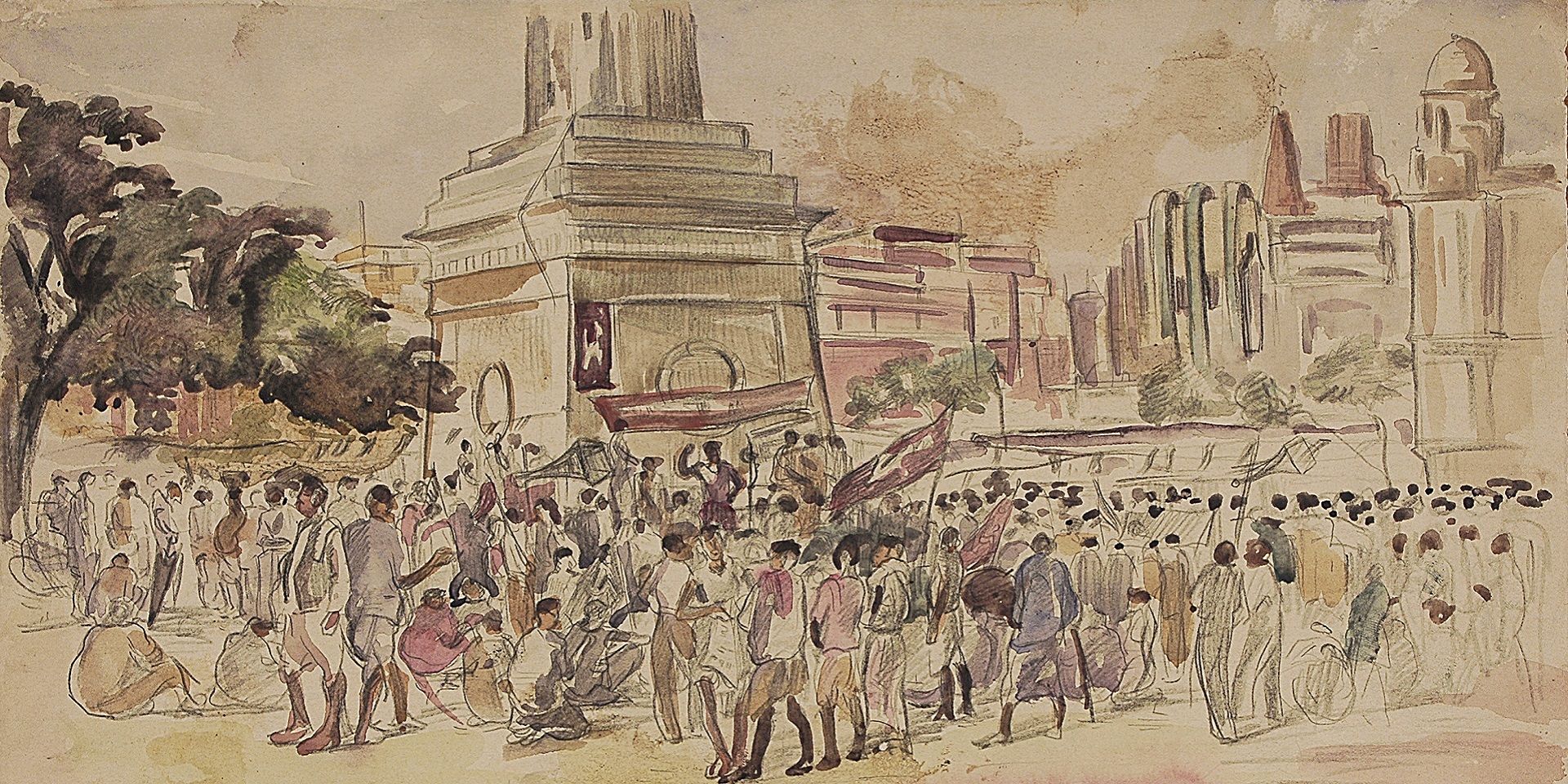
Conversations with Friends
Designing Calcutta: Navigating the city with architectural historian Swati Chattopadhyay
Shreeja Sen and Vinayak Bose
December 01, 2023
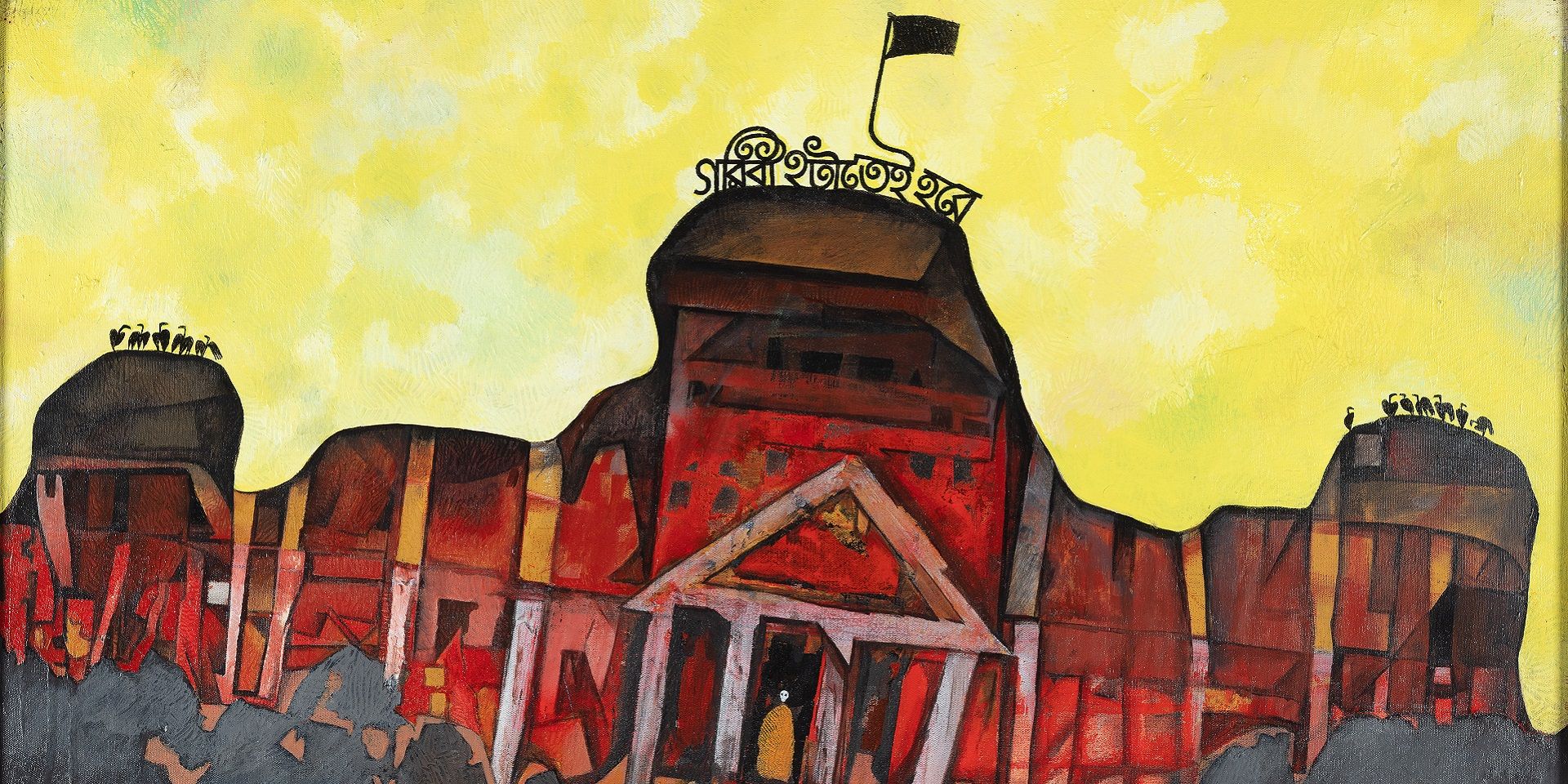
Conversations with Friends
Unarchiving the City: A Conversation with Swati Chattopadhyay
Shreeja Sen and Vinayak Bose
January 01, 2024
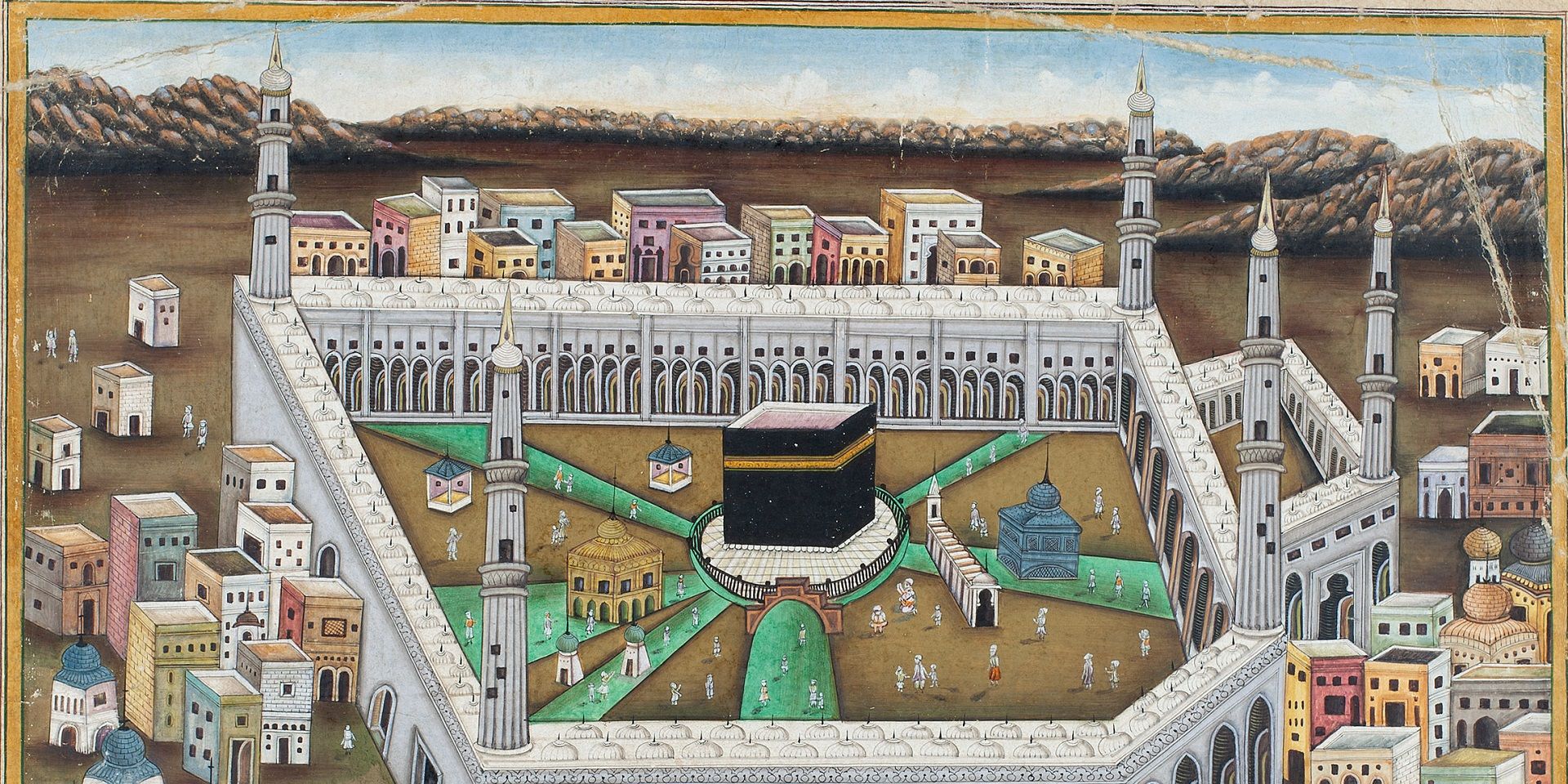
Conversations with Friends
Partition and Popular Art: A Conversation with Yousuf Saeed
Ankan Kazi
January 01, 2024

Conversations with Friends
Singing to Kali: A Conversation with Rachel F. McDermott
Ankan Kazi
February 01, 2024
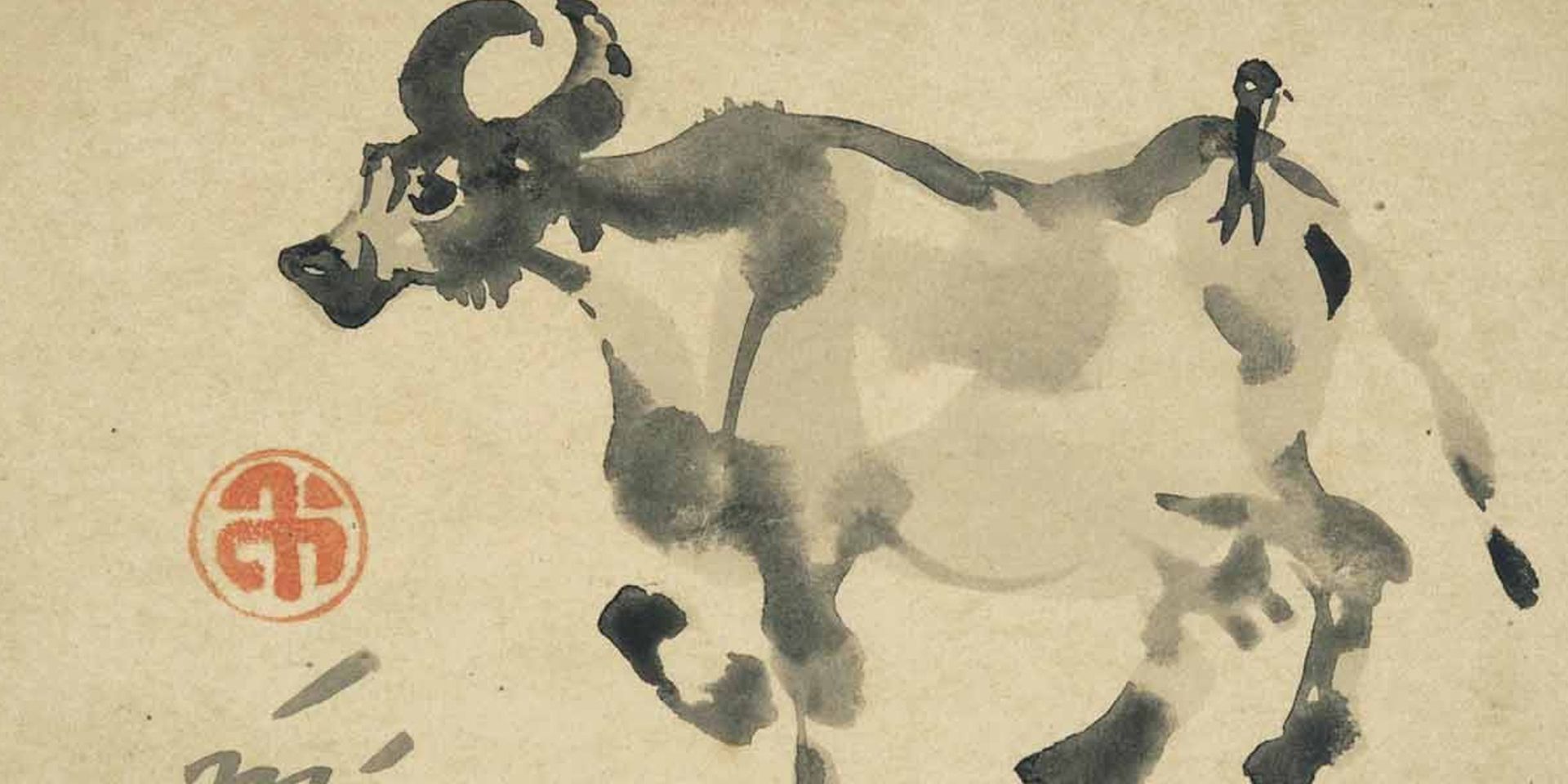
Conversations with Friends
The Asian Moment: A Conversation with Sugata Bose
Ankan Kazi
May 01, 2024
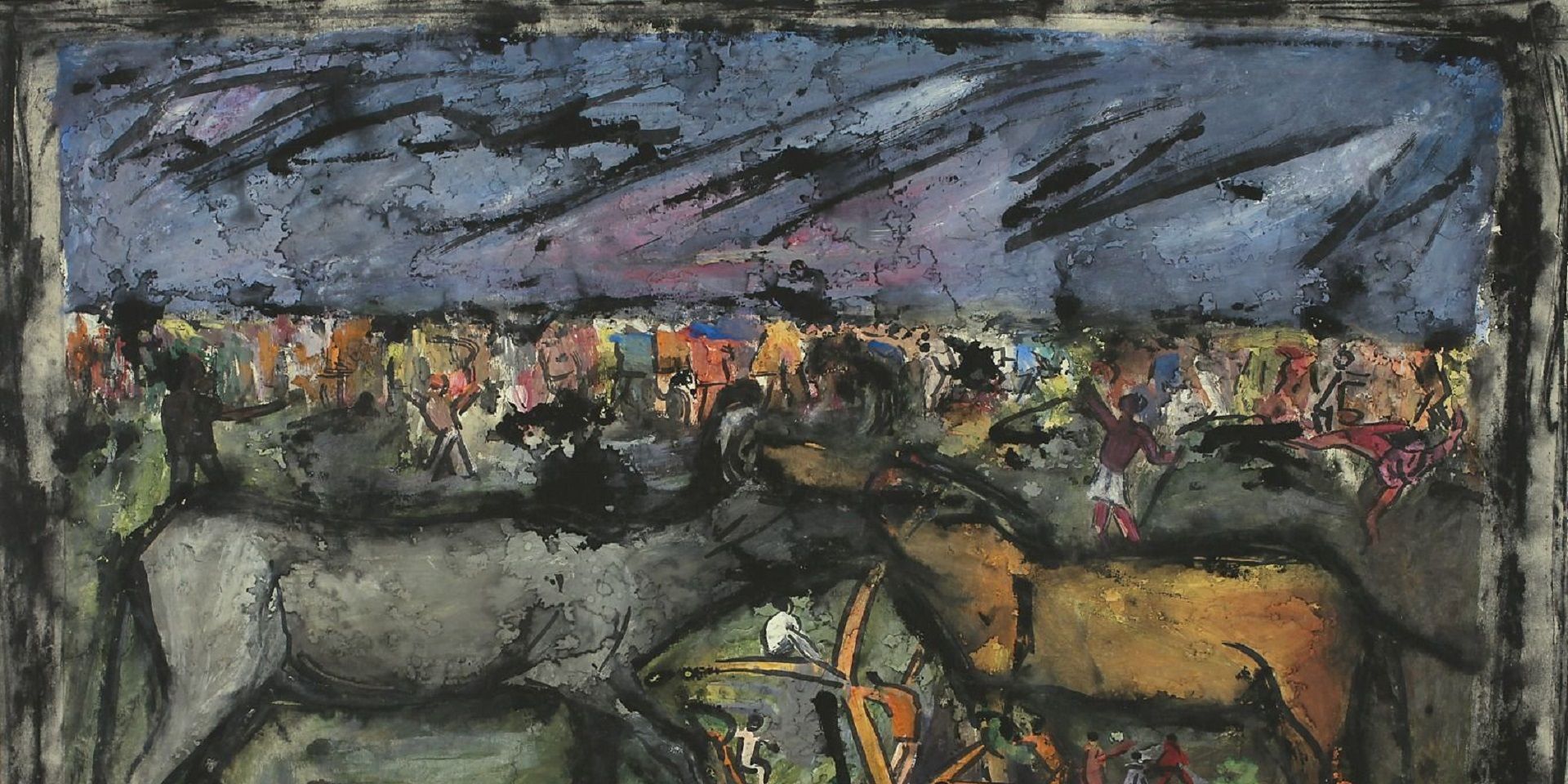
Conversations with Friends
Rudi von Leyden's Indian Art Adventures: With Reema Desai Gehi
Ankan Kazi
June 01, 2024

Conversations with Friends
Objects and the Museum: A Conversation with Sudeshna Guha
Ankan Kazi
July 01, 2024
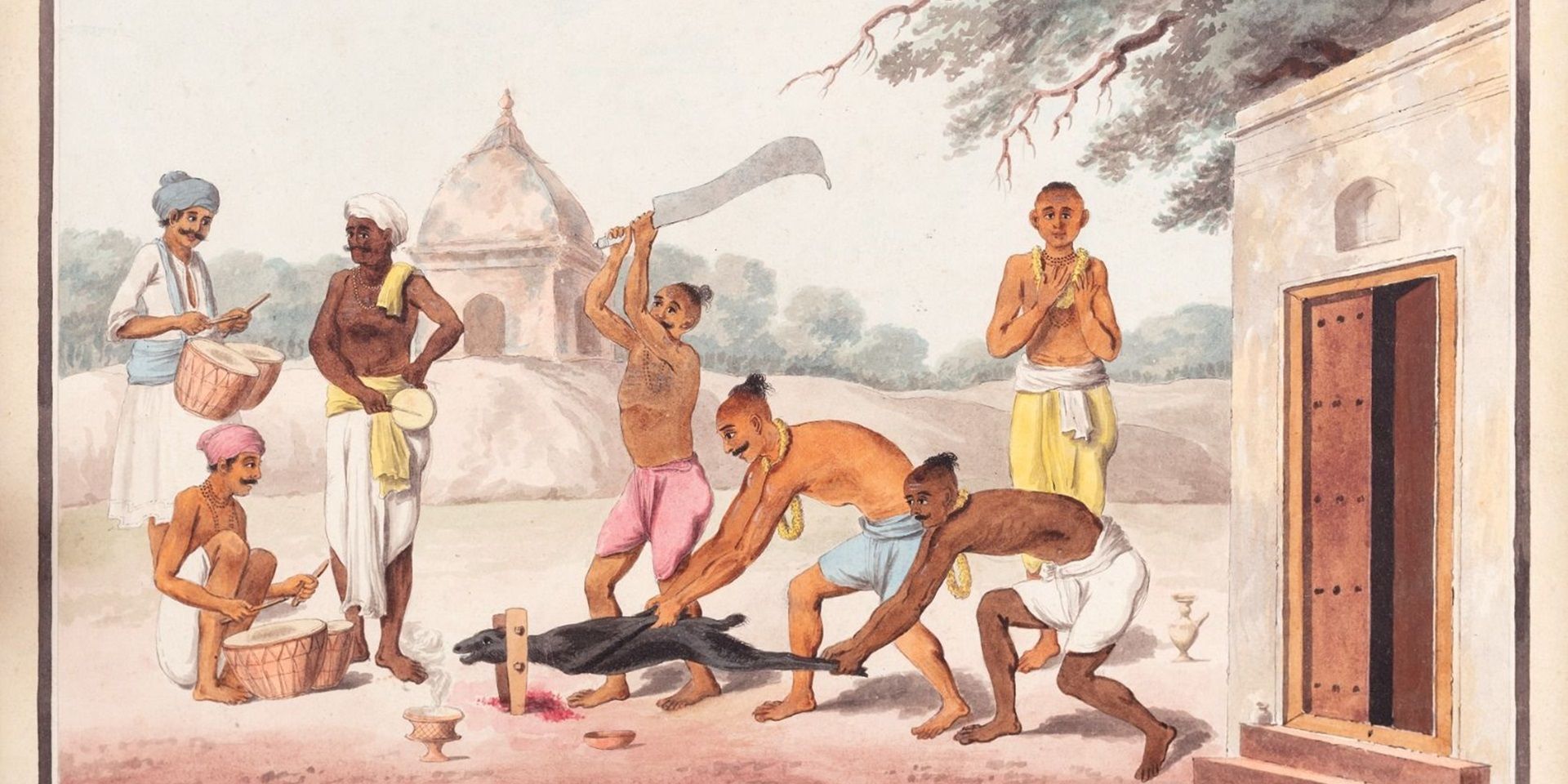
Conversations with Friends
Art of the Graft: A Conversation with Holly Shaffer
Ankan Kazi and Bhagyashri Dange
June 01, 2025

Conversations with Friends
Anita Vachharajani on Writing about Art for Children
Ankan Kazi
June 01, 2025





